new posts in all blogs
Viewing: Blog Posts Tagged with: how to, Most Recent at Top [Help]
Results 101 - 125 of 347
How to use this Page
You are viewing the most recent posts tagged with the words: how to in the JacketFlap blog reader. What is a tag? Think of a tag as a keyword or category label. Tags can both help you find posts on JacketFlap.com as well as provide an easy way for you to "remember" and classify posts for later recall. Try adding a tag yourself by clicking "Add a tag" below a post's header. Scroll down through the list of Recent Posts in the left column and click on a post title that sounds interesting. You can view all posts from a specific blog by clicking the Blog name in the right column, or you can click a 'More Posts from this Blog' link in any individual post.

By: Kathy Temean,
on 2/22/2013
Blog:
Writing and Illustrating
(
Login to Add to MyJacketFlap)
JacketFlap tags:
awards,
Interview,
picture books,
inspiration,
Process,
Kristina Swarner,
authors and illustrators,
How to,
Illustrator's Saturday,
Peachtree Books,
The Syndey Taylor Book Award,
Add a tag
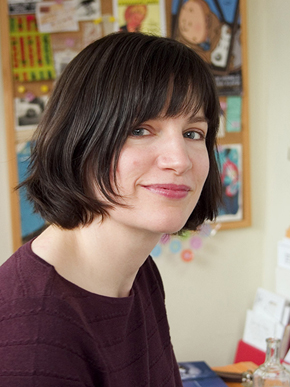 The other week I had a post about Kristina Swarner who illustrated ZAYDE COMES TO LIVE written by Sheri Sinykin after it was awarded the 2013 Sydney Taylor Honor Books for Younger Readers Award. Her art work is so wonderful, that I thought you would enjoy seeing more of her work.
The other week I had a post about Kristina Swarner who illustrated ZAYDE COMES TO LIVE written by Sheri Sinykin after it was awarded the 2013 Sydney Taylor Honor Books for Younger Readers Award. Her art work is so wonderful, that I thought you would enjoy seeing more of her work.
Kristina Swarner created her first illustrated story using crayon on manila paper, at the age of 5, and has been drawing ever since.
Often described as magical and dreamlike, Kristina draws much of her imagery and inspiration from dreams and from memories of exploring forests, gardens, and old houses when she was a child.
Since graduating from the Rhode Island School of Design, Kristina has illustrated books, greeting cards, magazines, wine labels, CD covers, and theatre posters, and has won numerous awards.
When not painting, Kristina enjoys music, reading, and trying to grow trees on her balcony. She lives in Chicago.
Here is Kristina talking about her process and Journey:
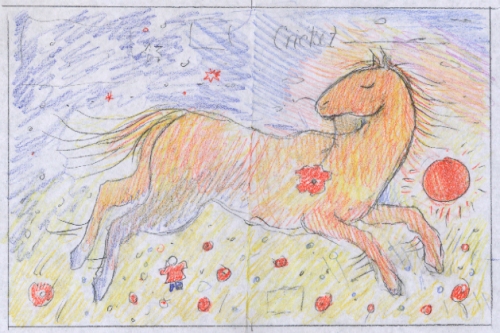 First, I think about the concept, a lot. Sometimes for days. Once I think I have a good idea, I do a lot of really light, really rough pencil sketches on paper until the drawing looks right.
First, I think about the concept, a lot. Sometimes for days. Once I think I have a good idea, I do a lot of really light, really rough pencil sketches on paper until the drawing looks right.
 Then I do a tighter sketch, and trace it so that I can transfer it to linoleum or a vinyl block. I carve out the areas that will be light colored in the final piece, ink up the block, and make a black and white print on heavy paper.
Then I do a tighter sketch, and trace it so that I can transfer it to linoleum or a vinyl block. I carve out the areas that will be light colored in the final piece, ink up the block, and make a black and white print on heavy paper.
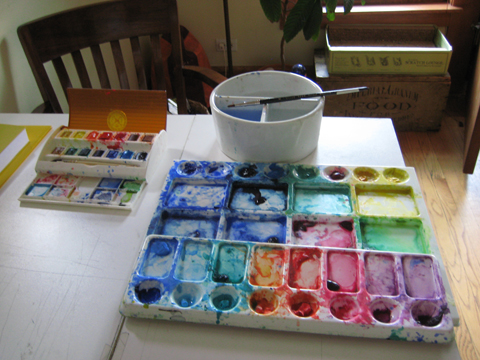
Once that’s dry, I work over it with watercolors and colored pencils. (Above is a picture of my desk.)
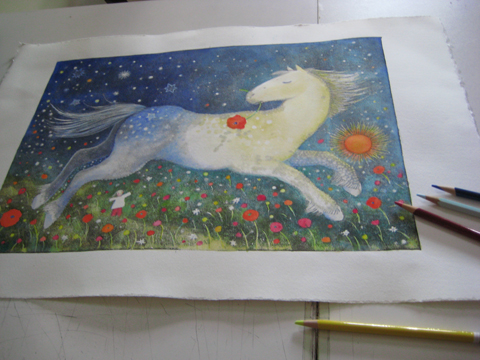
Final piece done for Cricket Magazine Cover.
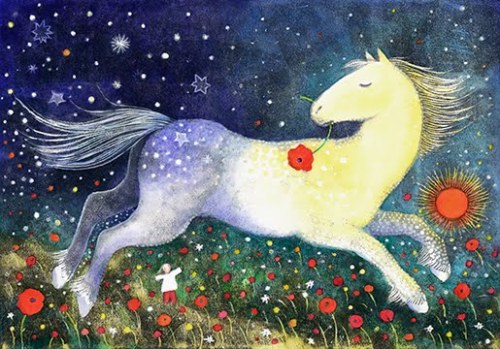
Kristina has published 19 books. Below are a few of the covers.
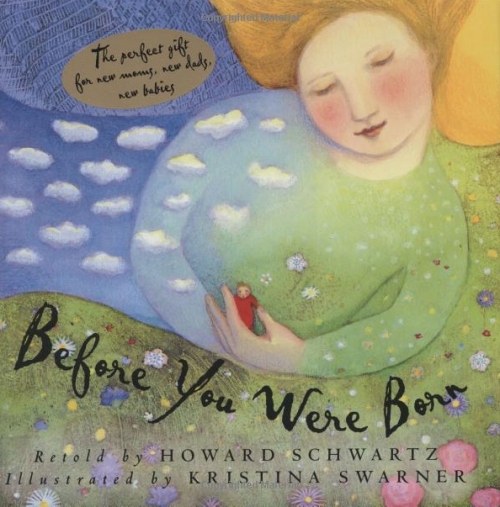
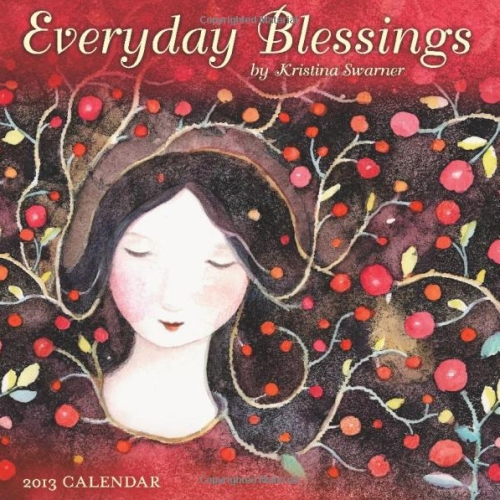
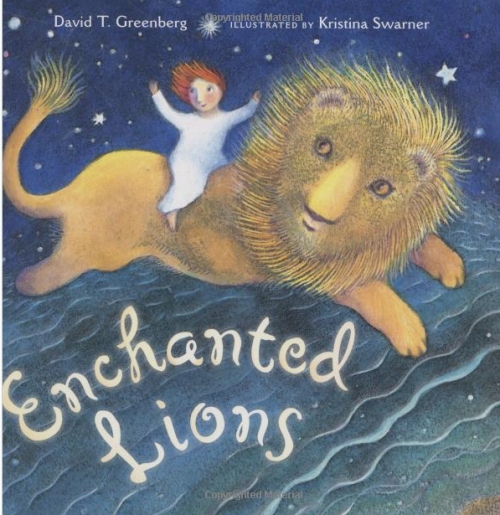
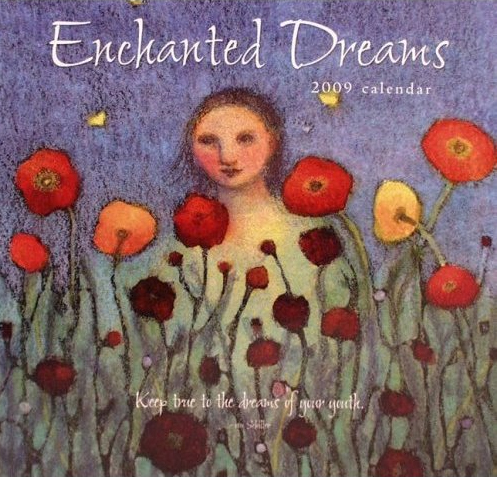

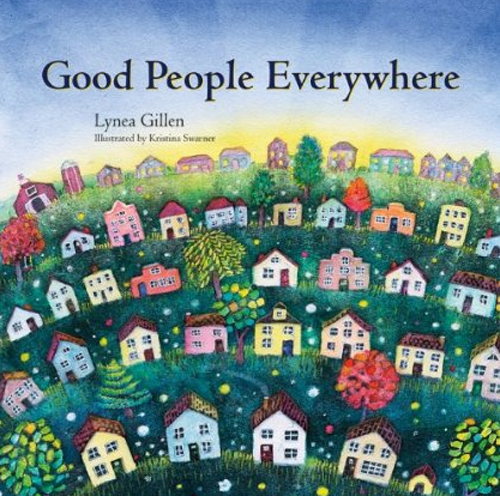
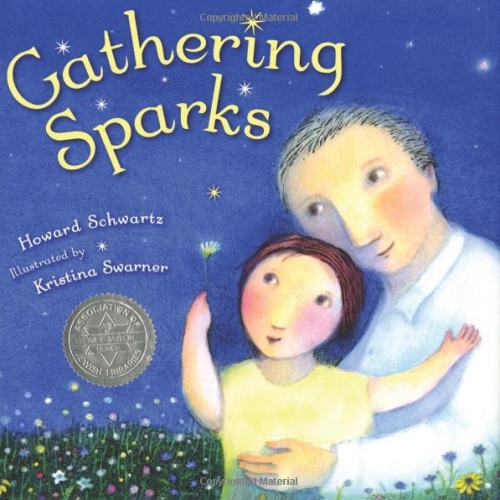
How did you come involved with Zayde Comes to Live?
As I heard it, Jane Yolen recommended me to Sheri Sinykin as a possible illustrator. Luckily for me Peachtree Publishing agreed with the choice.
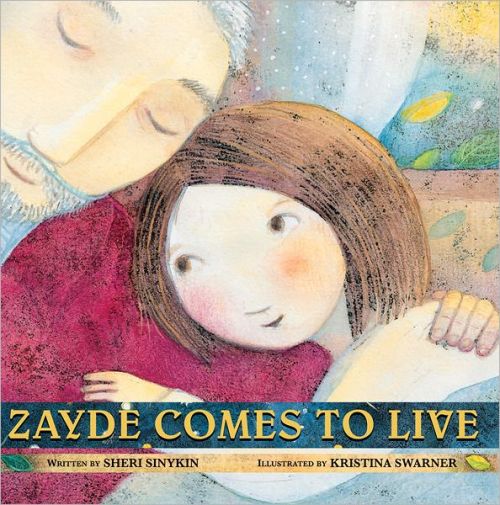
This is the cover of the book that sparked the 2013 Sydney Taylor Honor Books for Younger Readers Award.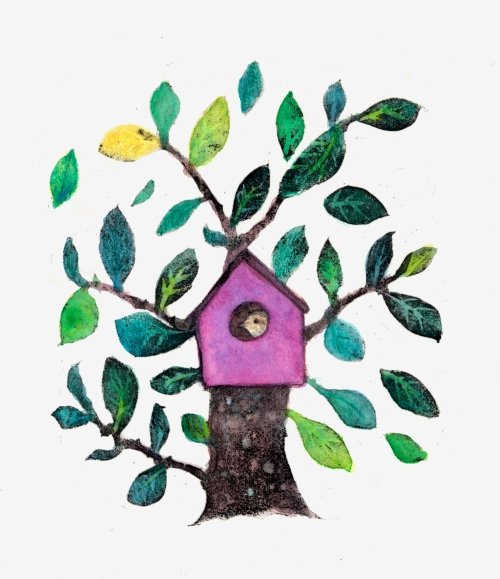
How long have you been involved in art?
When I was three, I told my parents that I wanted to be an artist. I’ve made illustrated books since I was very young. I still have one of my first drawings, of a girl named Alice who looks a lot like a daddy longlegs.
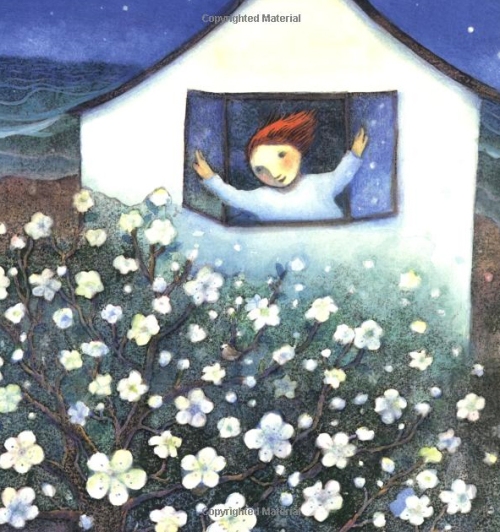
Did you go to college to study art?
I graduated from RISD.

Can you tell us some of the art classes you took?
I took as many different classes as I could–besides a lot of drawing and painting, I took graphic design, photography, animation, poster design, and different types of printmaking.
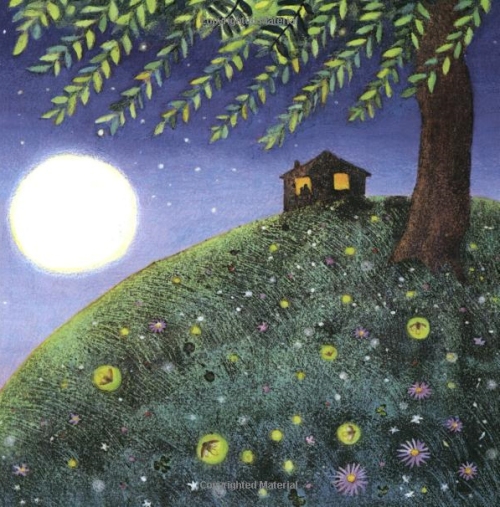

Do you think those classes influenced your artistic style?
Definitely. The style I use is a distillation of a lot of the techniques I learned.
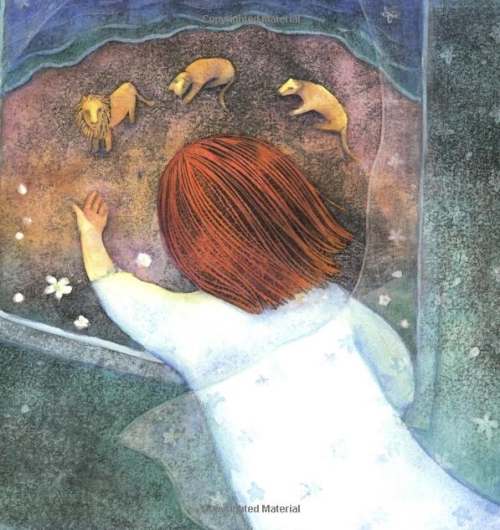

I noticed that a piece of your art has been chosen for Society of Illustrators Annual Exhibition. That is a big honor. How did that come about?
I’d been looking at a long genealogy chart and wondering about the people on it, and had the idea to paint a series called Imaginary Ancestors. I started with a painting of a queen, and was really happy with it, so I entered it in the the Uncommissioned category. I was completely blown away that it was selected. I went to the opening in New York just so I could see it at the Society.
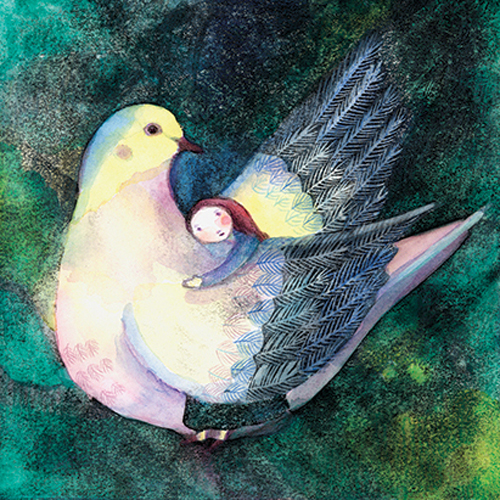
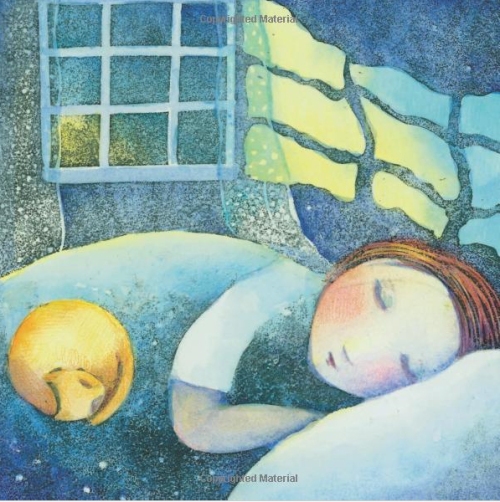
What was your first paid art assignment?
I think it was a tiny painting of a horse for a story in the Providence Journal-Bulletin.
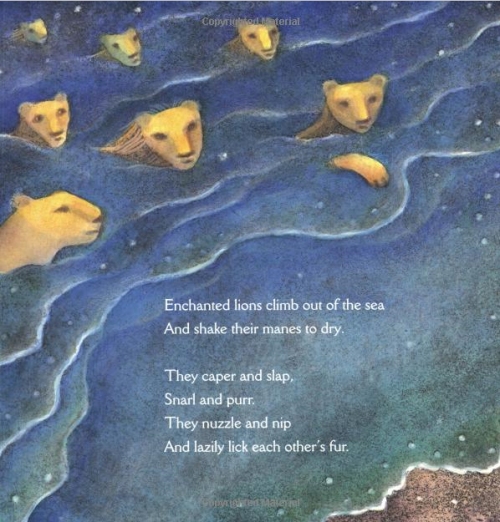

Do you think your style has changed since you first started?
I started out doing mostly watercolor. It was a little frustrating for me to achieve the contrast and texture I wanted with watercolor, and I got tired of standing around waiting for it to dry. I rely much more now on the black and white linoleum print under the watercolor–it’s faster, and gives great depth and contrast and texture.
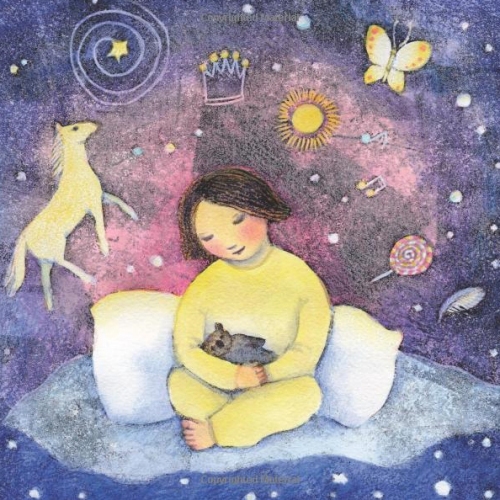
Was Zayde Comes to Live your first illustrated book?
My first illustrated book was Yiddish Wisdom, for Chronicle Books, in 1996(?).

How many books have you illustrated?
I’ve done 18, not counting textbooks.
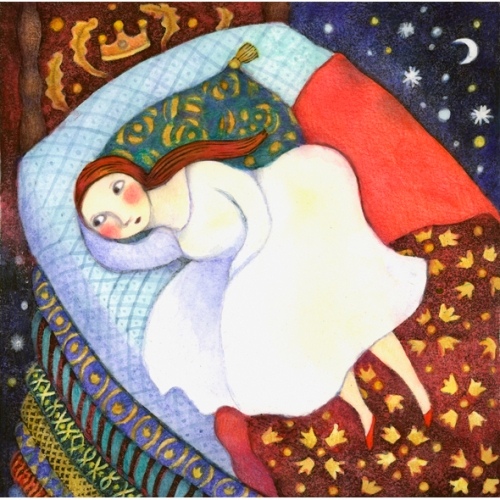
What publishers have you worked with?
Some of them are Chronicle, Roaring Brook, Penguin, Dutton, Scholastic, Oxford University Press, Knopf, Random House, and National Geographic.

Do you know how books get considered for the Sydney Taylor Book Award?
So far it’s been a mysterious process to me, because my publishers submit the books without telling me, and then I’ll suddenly get a phone call that I’ve won.

Have your illustrations been published in magazines?
Yes, I love working for magazines. I’ve done many illustrations for Cricket, among others.
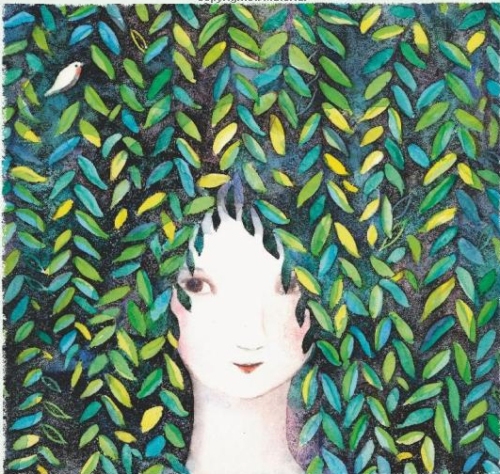
When did you decide you wanted to illustrate for children?
When I was about five and could read children’s books on my own. Ferdinand, A Birthday For Frances, Sylvester and the Magic Pebble– I wanted to make something as magical.

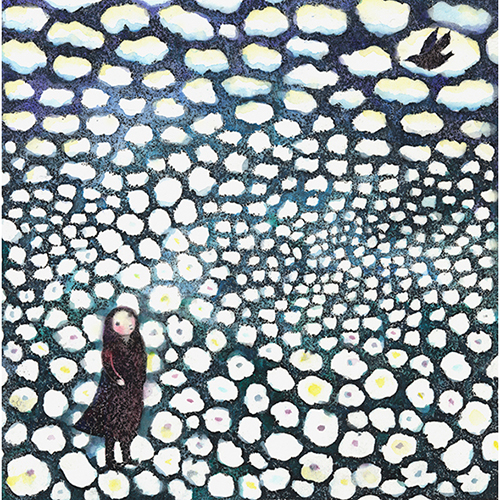
Do you have any desire to write and illustrate your own book?
It’s a goal of mine. I have a notebook full of more or less fragmented stories. I’ve been too chicken to submit them–I’m working on feeling braver.
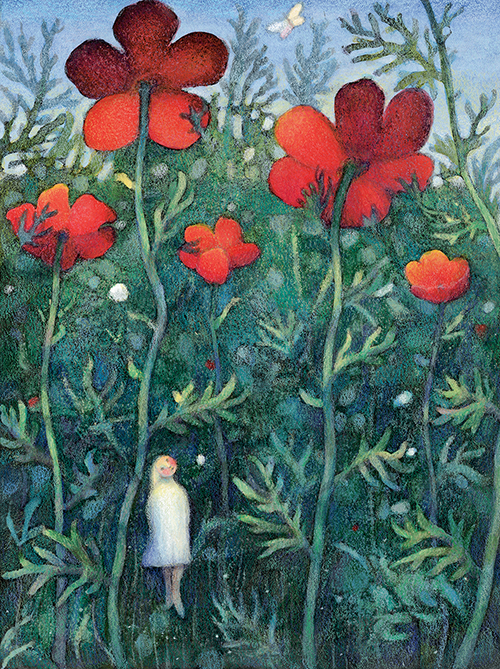
Do you have any favorite materials? Such as paper, paints, pens, etc.?
I like Rives BK paper, Prismacolor pencils, Winsor Newton watercolors and brushes, and Conte pastels.
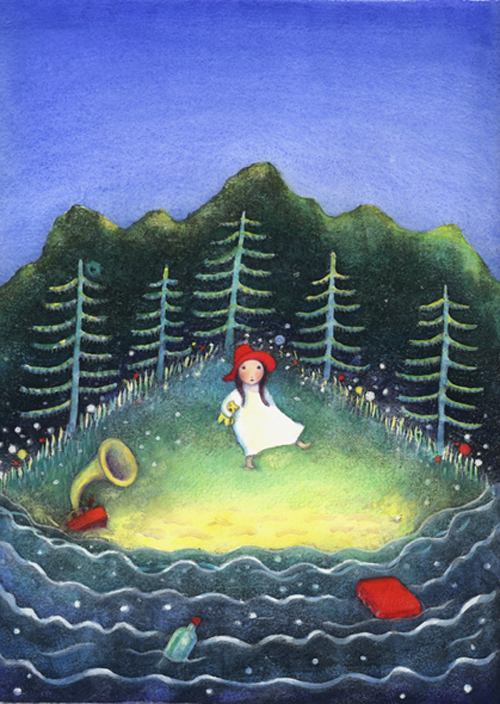
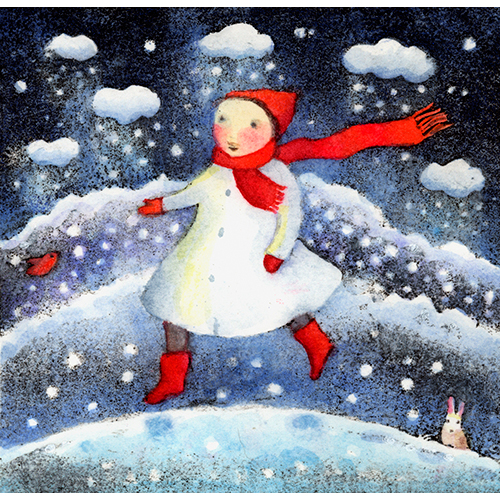
Do you take research pictures before you start a project?
I hardly ever work from photos–it always seems to show in the finished art, somehow. When possible, I sketch from life, or even from my memory, instead. I had to draw an old-fashioned biplane for one project, so I built a biplane out of cardboard and drew that.

How do you get art directors to notice your artwork?
Besides my own website, I have portfolios up on various websites, and still send out mailers every so often. I research places that might use my art and submit work to them, too.

Are you represented by an agent? If not would you like to be? If so, who represents you and what have they brought to the table?
I have an agent in London, who’s brought me a lot of work from European clients.

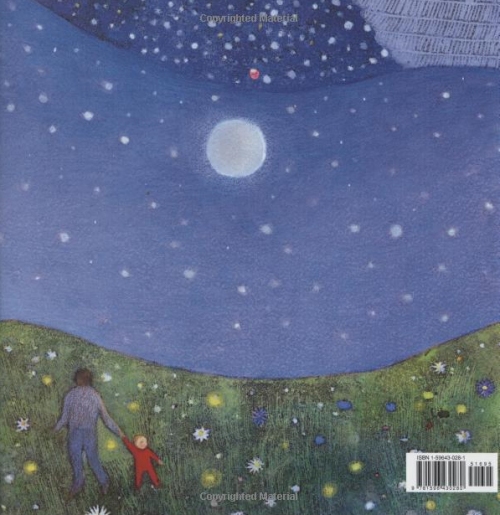
Did you set up a studio in your home?
My current studio takes up half of the dining room.

Excluding the normal things like paper, paint, brushes, pencils, and pastels, is there one piece of equipment in your studio that you really like and would not want to live without?
I have one very favorite discontinued Prismacolor pencil that is only about a centimeter long, so I only use it in extreme emergencies–it’s like the Holy Hand Grenade in Monty Python.
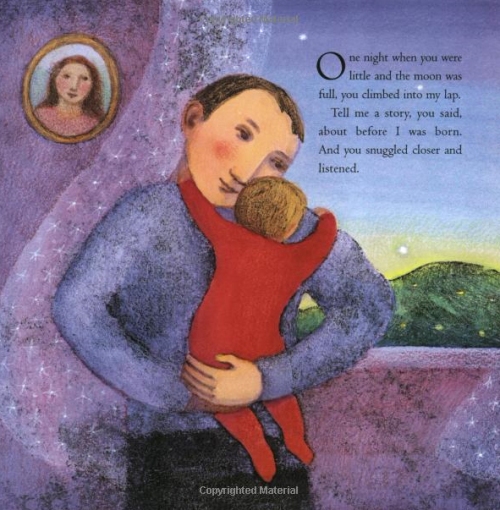
Do you try to spend a certain amount of hours each day illustrating?
I always start at 9:30 and try to work until 5, depending on how much I have to help my kids with homework and things.
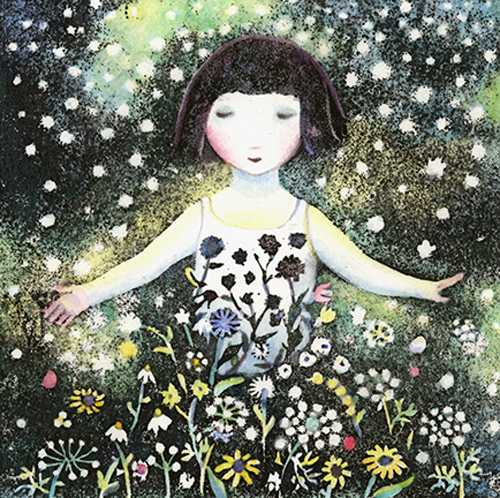
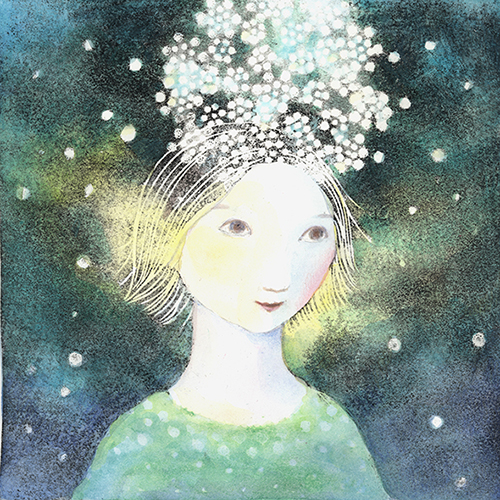
Do you use Photoshop? How and where do you use it?
I use Photoshop for scanning, resizing, and occasionally retouching artwork.
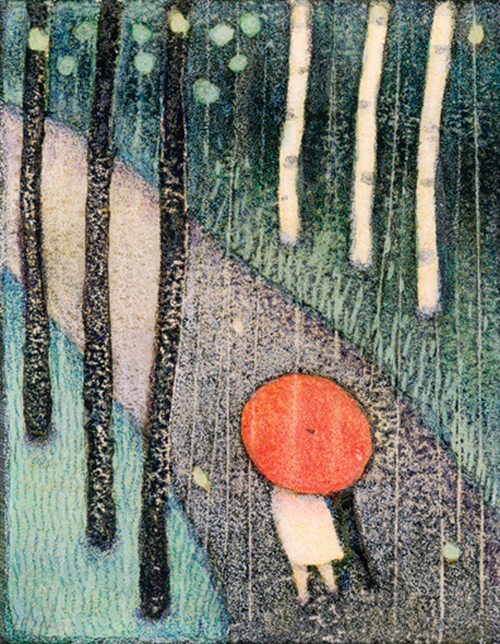
Do you own a graphic tablet?
I do, but I use it mostly for signing things.
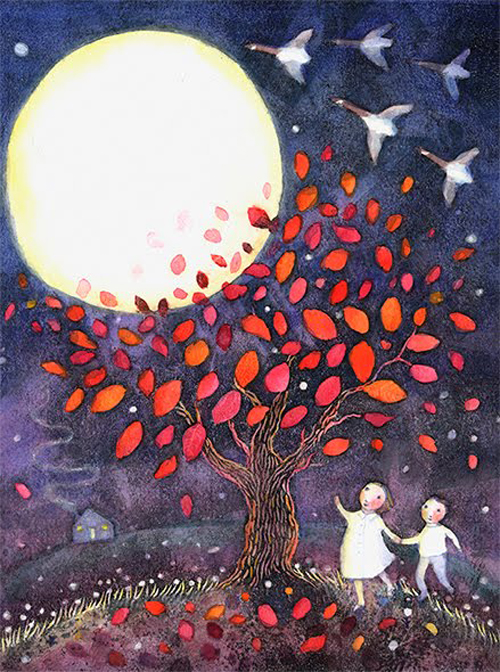
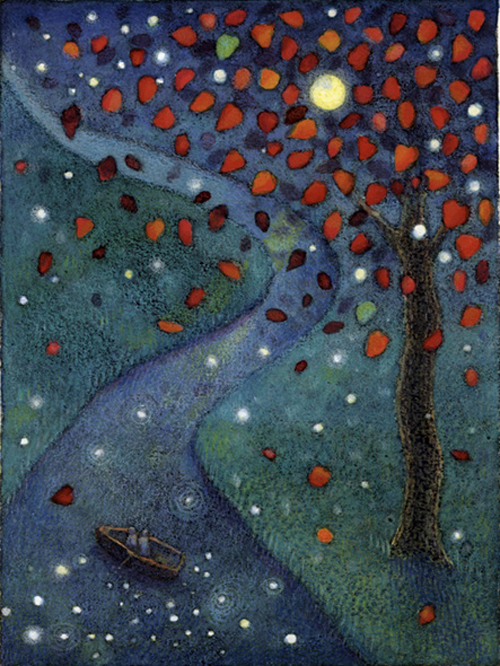
What are you working on now?
My 19th book! I’ve just started it, so it’s still at stick figure stage.

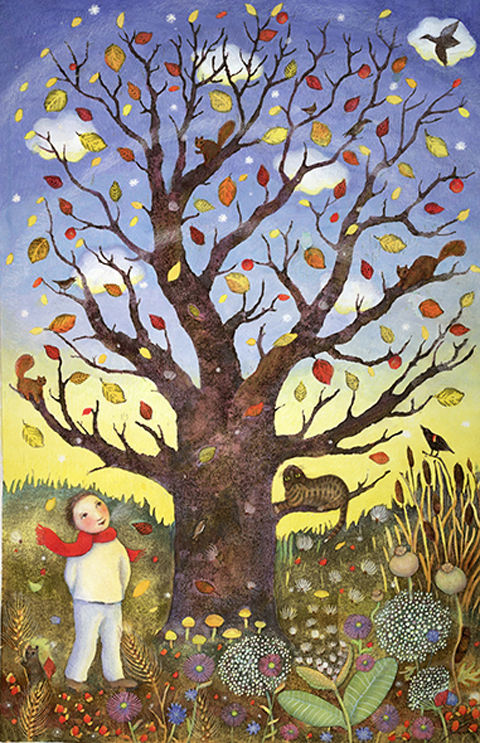
What did you do in the beginning to get noticed and what do you do now?
When I first started out, I relied mostly on sending out printed mailers and tear sheets, and occasionally going around with my portfolio. Now it’s much easier to just email samples and put up new work online, but the flip side of that is that there’s a much larger and more visible pool of people competing for the same amount of work. I still get good results sending printed postcards to point people to my website. I haven’t done as much as I probably should with social media–I tried Twitter for about a week, but it kept making me feel like my writing had hiccups.


Do You have any words of wisdom to share with other illustrators?
Work ebbs and flows. When work is slow, it’s easy to feel like everyone has forgotten you and that you’ll never get hired again and have to get a job at Dunkin Donuts. I’m trying to retrain myself into treating slow times like a vacation. When my calendar is looking emptier than usual, it’s a good time to research and approach possible new clients, do some artwork for myself, or go out somewhere I usually don’t go and get some new ideas. In a short time I’m usually back to being busy.
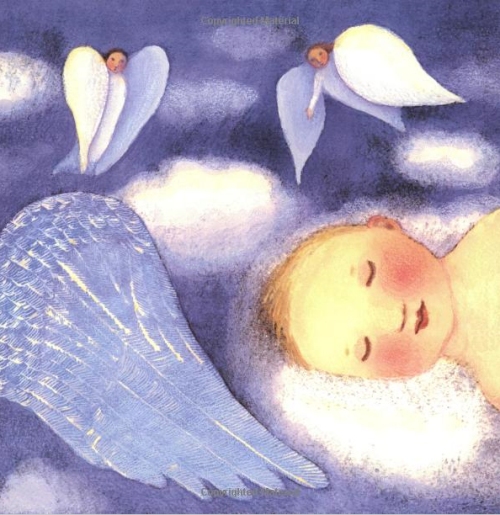
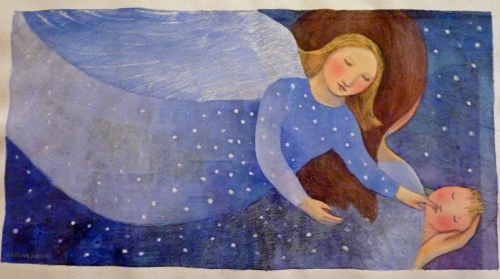
Thank you Kristina for sharing you process and journey with us. I look forward to following you as you create more wonderful books and illustrations. If you would like to see more of Kristina’s work, you can visit her at: www.kristinaswarner.com
Please take a minute to leave a comment for Kristina. THANKS!
Talk tomorrow,
Kathy
Filed under:
authors and illustrators,
awards,
How to,
Illustrator's Saturday,
inspiration,
Interview,
picture books,
Process Tagged:
Kristina Swarner,
Peachtree Books,
The Syndey Taylor Book Award 


By: Kathy Temean,
on 2/20/2013
Blog:
Writing and Illustrating
(
Login to Add to MyJacketFlap)
JacketFlap tags:
Tips,
reference,
Advice,
Self-Publishing,
Process,
publishers,
authors and illustrators,
Publishing Industry,
How to,
need to know,
demystify,
How to Self Publish Your book,
Add a tag
 If you have decided to self- publish, there are lots of things you need to know and consider. Don’t think you get to wiggle out of doing your homework and making a plan on the steps you need to take and things you need to consider.
If you have decided to self- publish, there are lots of things you need to know and consider. Don’t think you get to wiggle out of doing your homework and making a plan on the steps you need to take and things you need to consider.
The biggest mistake writer’s make, is thinking their story is ready after they have finished writing their book. Whether you go the traditional route or want to self-publish, it is always a mistake to run out and seek someone to publish your book after the first draft. You should pat yourself on the back, because you have accomplished something that eludes many writers and you have a right to be excited and proud, but 99% of the time it is not ready for publication. You have just taken step one of the publication process.
So many self-published books could have made money for the author, if only they could take control of that excitement of finishing that first draft. Even if it is your fourth draft and is the best book ever written, don’t mess it up by accepting a bad contract. There are companies who try to act like real publishers, who will take anybody and any book and offer a contract. The author is elated and jumps at the offer. Don’t do That!
I am convinced these companies do not give any thought as to the quality of the content. Sometimes I wonder if they even take the time to read the books submitted. They offer production, distribution, press release, and design and artwork, but it is all so inferior that even if the first draft of the book was well written and unique, it ends up being so ugly and made from such poor quality paper that no one, other than friends and family would purchase the book. Then they throw on an extremely high price, like $25 for a picture book, which further dooms the sale of the book.
These pretend publishers realize everyone has friends and family and will get those sales and occasionally they might get someone who really promotes their book and sells more than 50 copies. For all their work these motivated authors end up making maybe a total of $150. When if they had taken their time, did their homework, and made the right choices, they could have put out a good book that people actually read and would have made money for them.
There are so many things to consider and now so many forms of publishing your book. At the beginning of the year, I promised to start including self-publishing in my post. Next week, I will start pointing out steps you need to take, places to consider, and what they bring to the table, new formats and how to make that happen, and how to get your book seen and distributed.
Hope you’ll stop back.
Talk tomorrow,
Kathy
Filed under:
Advice,
authors and illustrators,
demystify,
How to,
need to know,
Process,
publishers,
Publishing Industry,
reference,
Tips Tagged:
How to Self Publish Your book,
Self-Publishing 


By: Kathy Temean,
on 2/18/2013
Blog:
Writing and Illustrating
(
Login to Add to MyJacketFlap)
JacketFlap tags:
reference,
Advice,
Process,
article,
How to,
How to pitch,
Save the Cat,
demystify,
Pitch a book,
Pitch techniques,
Add a tag
One of the assignments the writer’s attenting the Writer’s Retreat in March are facing is putting together a pitch for the novel they have written.
Goal is to pique interest in what you wrote and hear, “Tell me more!”
A pitch is a two or three sentence summary of your book. You want to: indicate the genre, the basic premise, and to generate interest to the point where the agent or editor wants to read your manuscript. A pitch should tantalizes the listener with a hook that sets your manuscript apart, so choose your words wisely.
To prepare you can:
1. Read movie descriptions.
2. Read the jacket of a few of your favorite novels – that’s the level of detail you want.
It should be a short and snappy, only be about 2-3 minutes long. Here are a few types of pitching techniques you can use:
1. The When a… technique brought to you by Craig Lewis
2. Hollywood-style: This is where you describe your novel as a mix of two other well-known books or movies. Hint: make sure the two you use were both profitable. For example: “It’s Twilight meets Harry Potter.” Then explain in the rest of your pitch.
3. The “Save the Cat” method: The idea is to come up with a sentence or two that describes your novel and includes the following:
• It should be at least somewhat ironic.
• It should paint a compelling mental picture.
• It should give an idea of genre and audience.
• It should have a killer title.
Blake Snyder, screenwriter and teacher, describes this method for coming up with loglines for film ideas in his popular screenwriting book Save the Cat, but it works for pitches, too.
Here are a couple from Blake’s book Save the Cat. They should be movies you know:
“A cop comes to L.A. to visit his estranged wife and her office building is taken over by terrorists.” – Die Hard
“A businessman falls in love with a hooker he hires to be his date for the weekend” – Pretty Woman
Start here, add some interesting details like who your hero is, what his goal is, why he needs it, what’s stopping him from getting it, then focus on the heart of the conflict and you’ll end up with a “knock their socks off” pitch. You cannot go wrong with this formula.
4. The 1,2,3 Log Line Approach:
First log line: a single sentence that includes:
The hero
The hero flaw
The life changing event that starts the story
The opponent
The ally
The battle or conflict
The second log line:
The character who changes & what changes
The third log line:
includes a sentence about the book’s theme. What the character learns? How he or she changes.
Now:
Since so many of us are using social media and are used to packing in lots of details in short sentence, you could hone into this mind thinking when start. Maybe going to Twitter and writing something or using your cell phone to text your pitch to see how it feels.
You can even get an app for your iphone to help you pitch. Here’s the link: https://itunes.apple.com/us/app/pitch-your-book/id432755697?mt=8
Write and Revise: Try writing 10-15 short intros to your pitch. This is the hook. When done pick the best and polish it. If you nail this part you are almost guaranteed to be asked to submit.
Now it is time to describe your book in a bit more detail. Be natural, be excited, be funny (if that is you or part of the book) describe the key turning points of your story, but make it short.
Practice Make Perfect: Pitching can be nerve-wracking, but it gets easier if you do it often, so practice on your family, friends, and anyone else who will listen. The more you do the more relax you will be.
Formal Pitches: If you are doing a formal pitch to an agent or editor at a conference, then finish by asking if your novel sounds like something they’d be interested in and let the discussion evolve. If they request a portion of your book, then make sure you clarify what they are asking for – the first few chapters – the entire manuscript? Remember to ask for a business card and contact information.
Hope this helps! Even if you aren’t attending the Writer’s Retreat or a conference in the near future, you still should be prepared. Opportunities are all around. Don’t let one slip pass you by not being prepared. I can’t get the memory of a writer I know meeting a publisher in line at a funeral and letting him know about her book, which ended up being the catalyst of her first published book.
Talk tomorrow,
Kathy
Filed under:
Advice,
article,
demystify,
How to,
Process,
reference Tagged:
How to pitch,
Pitch a book,
Pitch techniques,
Save the Cat 


By: Kathy Temean,
on 2/5/2013
Blog:
Writing and Illustrating
(
Login to Add to MyJacketFlap)
JacketFlap tags:
picture books,
Digital Books,
submissions,
authors and illustrators,
opportunity,
How to,
Get Published,
Places to sumit,
knowonder,
e-boos,
Write for Young Children,
Add a tag
If you write for young children, this might be just the ticket for you to get published. Check it out.

knowonder is looking for creatively crafted read-aloud stories, written in 3rd person limited.
The focus and mission of knowonder! magazine is to help parents promote, encourage, and teach creativity, imagination, and literacy to their children.
Their audience is parents and their children between the ages of 3 and 10. We publish 10 fiction stories per month on the web site. Additionally, weThey publish both print and digital collections of stories from the 500 stories available on our web site.
Stories: Story submissions should be fiction. They sometimes accept an occasional non-fiction story but this is the exception, not the rule. They encourage writers to submit stories that are full of action, adventure, and/or fun. They discourage stories that deal with everyday lives of children or present familiar things in a familiar way. They encourage creativity and imagination, and most of all, fun! Each story should be one that a child will love to listen to. Imagery and action are key elements that we strongly encourage.
Story word counts may range between 500 to 2000 words. Call outs are appropriate and do not count toward the total word count. Call out activity ideas or “talk time” ideas are welcome! We are willing to entertain longer stories. We may be willing to accept stories told in rhyme, but have very high expectations for proper meter, etc.
Fiction: We pay $25-50 per fiction story. Each published story is also eligible for the monthly Editor’s Choice Award and a $100 cash prize.
Articles: We are currently looking for volunteers to help us build out this section (fun facts). Please see the submission guidelines for more information on what we are looking for in this category.
for You by You articles: We are currently looking for volunteers to help us build out this section. Please see the submission guidelines for more information on what we are looking for in this category.
Kid Stories: We do not pay anything upfront for Kid Stories or Kid Art, however, we hold a monthly contest and award kids with great prizes each month!
Click here to submit a story. (Note: you will need to create an account with them. It’s quick and painless, and once you’ve done it, you’ll be able to use that account to submit work to lots of other publishers, too).
Before submitting, however, they ask that you please do these two things:
1. Read through our legal agreement. By submitting to us, you acknowledge that you have read and accept our legal terms and agreement.
2. Read our submission guidelines! We have accepted a lot of different stories in the past, but we are narrowing our focus and want you to have the best chances possible of getting your stories published. So please read these guidelines before submitting to make sure you’re sending us something we really want to see.
Here is what they are looking for. This is very good explanation of what makes a good book for this age group. I cut out all the examples from books they provided, but when you have time it is worth studying. Here’s the list:
Narrative stories that are fun, adventurous, engaging, silly, imaginative, creative, have great characters, are memorable, entertaining, flow well when read aloud and have action! Remember, you are sitting by the bedside of the child, you have just enough light to read-aloud. The child’s eyes are closed, or even if they’re open he’s imagining what you are reading. knowonder! wants stories that will paint images in a child’s mind and encourage use of all 5 senses as they imagine amazing visions of their own.
Read-Alouds – knowonder! stories are read-aloud stories.This means that a large majority of stories you submit to knowonder! should be stories that a parent or older child can read out loud to younger children. These are very different in form, format, function (etc.) than picture books. Our stories have just one picture and rely, instead, on imagery created inside the story. In that sense, our stories are much more akin to chapter books and young adult fiction. Therefore, be careful to write stories that aren’t envisioned from the beginning as a picture book.
SDT—This stands for Show-Don’t-Tell and is a well-known method for drawing the reader into a story. Please look it up; research SDT. Then check every sentence to make sure you are following the rules!
Narrative– please don’t eliminate good narrative because you are attempting to Show-Don’t-Tell. Narrative includes telling a story using description and well written prose that allows the child listening to create the pictures in his own mind. Imagery and style come in to play here. Give the child the opportunity to use all of her senses when engaging in the story.
Literary device usage—simile, metaphor, imagery, onomatopoeia, alliteration, hyperbole, and use of idioms are all devices that pull readers into the story, make the story exciting, liven up the characters, and make reading aloud fun and engaging.
Plot—A good story will include a well designed plotting of events that somehow effect the main character. Every word, sentence, and paragraph should be analyzed to make sure it is significant to that plot and moves the story forward.
- Beginning–jump right into the action, in medias res! Remember the children are lying in bed, waiting for the action of the story to begin. Write your beginning in a way that will have them mesmerized so much they’ll quit squirming and listen.
- Middle–remember these pointers– rising action (with action being the operative word here), the main character engaging in some conflict, active voice, and keep moving!!!
- Great endings / tie-backs / punchlines–A well written story will follow the plotting to a point where the action rises to critical mass and Explodes! Then it will come down and have a rap up. Good endings do not fall off cliffs, they have a punch line (not necessarily a funny ha!ha! punchline, although that would be nice) but a great ending that has punch and ties back to the conflict, characterization, repetition, or some other element of the story. Wrap up stories nicely. The last line is the hardest to write for a reason. It takes work to get it just right. (Finding a great ending is like the scene from Sister Act where Whoopie Goldberg punches that young red-headed nun in the stomach and out comes that great high note!!! Ahhhhh!!!)
Words—check your writing for weasel words. Do you overuse the word “that,” or any other word? If you have more than one “that” on a page you should just take them out; I’m sure that you will find that you don’t need them. Also, use a thesaurus!! If you’ve used a descriptive word more than once, look it up in a thesaurus and use a synonym. Also, check your word choice–again use a thesaurus! Thesaurus.com should be your best friend! When writing for children an author must look at every single word. How do the words fit together to make a sentence? How do those sentences flow to create a paragraph? How does each word, sentence, and paragraph come together to paint a picture in the mind of a child?
Repetition—Children giggle when funny things happen in stories; they engage when funny things repeat in stories. I’m not talking about rhyme; I’m talking about rhythm and beat and repetition of lines, actions, etc…. A well crafted story will roll off the reader’s tongue and skip along through the child’s mind.
Characterization—Have you been around children? If not you should spend some time listening to them, seriously eavesdropping! You should talk with them, interact with them, keep a notebook nearby at all times, and jot down what they say and do. Each character in your story should be developed so we can see them, hear them, and understand them. They should be quirky, exceptional, and unique. No two children are the same in the real world so they shouldn’t be the same in fiction either. Characters should be dynamic and well rounded, not static and flat. Static means they don’t change, and flat means boring. Show each character through their actions and traits.
Voice—Dialogue should move the story along and help us hear the voices of the characters, especially the voice of the main character. That voice should be unique, whether it’s sad, happy, spunky, thoughtful, philosophical, or whatever, the words chosen should bring that voice out so we can hear it. The tag-lines should be well written. As our editorial team discussed dialogue, we decided we don’t want too much dialogue in our stories. Remember these are read-alouds. The more narrative prose and the less dialogue the better. Not that we don’t want any dialogue – we just don’t want a story that is 75% dialogue! We are looking for more description, imagery, and narration in between because this lends well toward reading aloud.
Point of View—After careful consideration, we’d really like knowonder! stories to be written in 3rd person. First person is also ok, but not the norm. Also, as I looked through the stories I noticed some of the ones we like best are written in 3rd person omniscient. This style is considered archaic nowadays. But I’ve had to consider why. Third person omniscient allows the author/narrator to step into the mind of every character. The powers that be say this is too confusing for a child. J.R.R.Tolkien and C.S. Lewis wrote in this manner. Even J.K. Rowling steps into this style in some of the Harry Potter books. When interviewed on this, she stated it was necessary to step into the mind of Voldemort on occasion and even into the minds of Hermione and Ron. The important point? It moved the story forward. Sticking with 3rd person limited in the mind of only the main character will be our norm, but occasionally the listener might want to know about the minds of different characters.
Tense—Past tense is best for read-alouds. Please stick to past tense. Novice writers tend to switch tense and point of view. No present tense and no switching tense please!
You are your best critic– Write a first draft. Read it out loud. Look carefully at the beginning, middle, and end. Look at each of these guidelines and see if you can spice up your story before submitting to our editorial department. Rewrite. Revise. Submit. We’ll send suggestions as needed. Our goal is to encourage your own creative genius to blossom. (A note on formatting- Justify flush left, no double spacing, only one space after punctuation. (Word-processing has been allowing for the extra space now for many years).
Didactic stories– Didactic means preachy. A moral can be woven into a story without making it come across as a lecture. Characters should grow naturally out of the choices they make, the events in the stories, and their interactions with other people. We get stories all the time that are obviously written with the express purpose of teaching a lesson. Many of these types of stories will fall flat with children. Should we teach them good values and morals? Can we use literature to teach lessons? Yes, absolutely! But let it happen naturally. Also, because of the nature of what we are (2000 words or less) this can be difficult to do without forcing it. So keep in mind the the main purpose of knowonder! is to make reading fun. It’s more important for children to learn to love reading at this point than it is for us to play parent and try to teach them through the stories we write. Think about fables and parables and how relateable they are.
Click this link to read their full Submission Guidelines to make sure you are not sending in the types of stories that stack their desks. You will also find the Editor’s favorite stories and why. Good luck!
Talk tomorrow,
Kathy
Filed under:
authors and illustrators,
How to,
opportunity,
picture books,
Places to sumit,
submissions Tagged:
Digital Books,
e-boos,
Get Published,
knowonder,
Write for Young Children 


By: Kathy Temean,
on 2/3/2013
Blog:
Writing and Illustrating
(
Login to Add to MyJacketFlap)
JacketFlap tags:
Process,
article,
authors and illustrators,
opportunity,
How to,
Active Voice,
need to know,
Conferences and Workshops,
demystify,
Get Rid of Passive Voice,
Joan Y Edwards,
Online Writing Workshops,
Add a tag
“Get Rid of Passive Voice” by Joan Y. Edwards
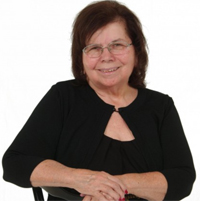 “A style that consists of passive constructions will sap the reader’s energy. The difference between an active-verb style and a passive-verb style–in clarity and vigor–is the difference between life and death for a writer.” -William Zinsser On Writing Well.
“A style that consists of passive constructions will sap the reader’s energy. The difference between an active-verb style and a passive-verb style–in clarity and vigor–is the difference between life and death for a writer.” -William Zinsser On Writing Well.
The detective waited. He said to the police officer. “I saw it with my own eyes. This author used passive voice in a manuscript.”
The policeman took off his cap, scratched his head and said to the author, “Get rid of it.”
The author put both hands out palms up. “But, Officer, I don’t know how.”
The detective and officer threw up their hands in disgust. They pointed at the author and said, “Learn about passive voice in 24 hours or we’ll book you.”
I hope you enjoyed my humor. I certainly hope you don’t get in a situation like that. However, if you do, I’m here to help you.
Active voice helps insure clarity of meaning. Every word in your manuscript should have a reason for being there. You want each word to carry a clear message in your manuscript. If your manuscript has too many words, eliminating sentences that use passive voice will trim your word count and add to your clarity at the same time. Rambling on and on in passive voice loses readers. Active voice ropes them in and keeps them reading your manuscript from beginning to the very end.
Here is an explanation with examples to help you understand about voice. There are two voices: Active Voice and Passive Voice. Active voice has the noun subject (doer) verb order. The verb to be used as a linking verb shows the condition or existence of the subject. Passive Voice usually uses a form of the verb to be and a past participle of a verb: is, are, was, were, being, had been. The subject is not named before the verb in a sentence using passive voice.
In active voice, the subject does the action. The order is simple – subject followed by verb.
David threw the ball. Who threw the ball? David threw the ball. Examples of sentences using active voice:
- Stephanie lost the money.
- Mother bought jewelry.
- James had sung the songs.
- Nellie was writing letters.
- Phillip was building the dams.
- The hurricane had damaged the houses.
In passive voice, the subject (doer) is not before the verb. The subject is absent or it may come in another part of the sentence.
The ball was thrown. The ball did what? Nothing. It was the receiver of the action. On its own, a ball can’t do anything.
The sentences that follow are in the passive voice. No one knows who did the losing, the buying, or the building. It is not mentioned in the sentence before the verb. The subject is missing. The doer of the action is missing. In passive voice, the direct object of a sentence is written before the verb where the subject usually is. #6 is still a passive voice sentence because hurricane is not before the verb damaged.
Examples of sentences using passive voice where the subject – the doer is missing.
- Money was lost.
- Jewelry was bought.
- The songs had been sung.
- The letters were being written.
- The dams were being built.
- Houses had been damaged by the hurricane.
Think about it. It’s harder for people to read and figure out what’s really going on when authors use the passive voice. Therefore, editors and readers like to read books written in active voice. Search for the passive voice in your manuscript. If you use Microsoft Word, it has a review tool to check spelling and grammar. If a sentence is in the passive voice, it will tell you and suggest that you revise the sentence. Remember when you change the passive voice to the active voice, put the subject (the doer) before the verb.
Click this link to take Joan’s Active-Passive Voice Quiz
Joan is giving three workshops online with the Muse Online Writers Conference in October 7-13, 2013.
http://themuseonlinewritersconference.com/ In August or September, they will open for registration.
Here are the 3 workshops:
How to Write a Pitch That Sells
A Five Day Workshop to help you formulate an enticing, magnetic pitch that no editor, agent, or reader could turn down. Attendees will study the pros, the pitches for the best sellers in your genre and do exercises to build your pitch skills, create and improve a pitch.
30 Ways to Correct, Trim, and Enhance Your Manuscript
Writer will learn how to enhance you manuscript by correcting grammar/punctuation, using vivid showing words with emotional impact and cutting the words that don’t carry the plot, character, and emotional theme forward. Plus a whole lot more.
Become a PubSubber
This workshop provides a way to encourage and empower writers and artists to submit their work for publication
often. Each time you submit a quality work, you increase your chance to be published. This workshop has detailed steps and resources to build the necessary skills to get your submission in the mailbox or sent through email on your personal submission day.
Joan Y. Edwards is an author/illustrator of the delightful picture book, Flip Flap Floodle. She is a consultant, motivational speaker, and teacher. She offers goal-setting, positive thinking, and writing workshops for adults and children. She is a member of Children’s Book Writers and Illustrators (SCBWI) and Catholic Writers Guild. Her articles have been published in SCBWI-Carolinas Pen & Palette and SCBWI Bulletin. Her website, http://www.joanyedwards.com
I’ll remind you of these when registration begins, so you don’t miss signing up if you are interested.
Talk tomorrow,
Kathy
Filed under:
article,
authors and illustrators,
Conferences and Workshops,
demystify,
How to,
need to know,
opportunity,
Process Tagged:
Active Voice,
Get Rid of Passive Voice,
Joan Y Edwards,
Online Writing Workshops 

Today we have illustrator and author J.D. Holiday sharing some tips on self publishing children's books. I know many of you may want to traditionally get your books published, but for those who are adventurous or are open to self publishing, you'll find these tips very helpful.
My Tips on Self-Publishing
By J.D. Holiday
I know of two ways to self-publish and I've done them both ways. One way is to use publishing services. There are many publishing services out there and some are not perfect to say the least. Some offer packages of different levels of services to pick from, others give you a set fee and they do all the work. They can cost from $500 to $1500, even higher to get your books in print. Most of them will take your files and design your book or you can upload your files and work out the design yourself. I know authors who have had good luck with some of these services and it seems simple enough if you have the money. I was not one of the lucky ones going this way and decided I had to learn what there was to know to have my books printed.
The second way I know of is to learn about getting a book made from beginning to end. This is sometimes called, independent publishing. Doing it this way, you have to hire the printer, the book designer and pros for anything else you find you can't do yourself; including the marketing and more. But there is satisfaction that comes from doing it all yourself.
For independent publishing, you will need to find information about every step you'll have to take. If your books need illustrations and you are not an artist, you should start right here. You will need to find an illustrator and pay them for the pictures or split the money made on each book you make with them. Though you can consider the two of you sharing the whole cost of producing the book together. In addition, you can buy stock photos for your book. (Research stock photos to find out more about it.)
If you do consider going the independent publishing route, you will need to find out about:
- Computer software or book design
- Starting your publishing business (Not all printers will work with anyone who isn't a publishing company.)
- Coming up with a budget
- Coming up with the money
- Buy your own ISBN numbers
- Decide if you will do POD (Print on Demand) or do offset printing
- Find a printer. (For picture books that may be overseas for 4-color printing and lower cost though you will have to order maybe one or two thousand copies and find a warehouser or a place you can store the books away from too much heat and humidity. There are also POD printers in the USA that do 4-color printing AND the cost is low.)
- Book consultants and packagers
- Galleys
- Returned books (You will need to know about this early on.)
- Marketing help and/or plan
- Website and SEO (Search Engine Optimization)
- Writing letters
- Business cards
AND much, much more!
The publishing business is not an easy one. I advise you to do your own research. The internet can help you find the information you will need. There are sites for just about everything on publishing. Research people who can do the jobs you can't do yourself andREAD everything you can on publishing.
~JD Holiday
Some Books to Read:
PRINT-ON-DEMAND BOOK PUBLISHINGby Morris Rosenthal. I can't say enough about this book. He covers the latest information about POD, the publishing business, and marketing your books while saying it in everyday language. His detailed information on Search Engine Optimization was a great help.
THE PUBLISHING GAME, PUBLISH a Book in 30 Days by Fern Reiss. Though I don't think anyone should undertake publishing a book in 30 days, this book has a good plan to follow. It goes through what to do and when to do it. You will define you goal, write the cover copy, understand book pricing, learn about software, book layout, and galleys. It has a list of PRINTERS, learn about listing your book with bookstores, and know how to ship books, (and YES) returns.
The Self-Publishing Manual, How to Write, Print and Sell your Own Books by Dan Poynter. This is a reference book for authors self-publishing with nothing left out and resources for everything.
WEBSITES
http://www.gropenassoc.com/index.htm This is a Reference Desk with everything at a click. Marketing/price setting/ design info/ editing/finance/ management/ technical info in publishing and links to everything self-publishers need.
http://wexfordpress.com/index.html John Cullenton's site offers do-it-yourself find out about indexing, book coaching, shepards, packagers, book design, and typesetting. See his lists of specialists.
http://www.newselfpublishing.com Aaron Shepard's site. This site has tips for young and older authors. Aaron Shepard's Bulletin is helpful with info on self-publishing, software for creating your books, printers info. I read his newsletter each month.
www.aeonix.com Pete Masterson's site. BOOK Printer's list and what they print, info on POD and Digital companies, Vanity press info, page layout, Book design, and software.
J.D. Holiday is the author and illustrator of four children's books. Picture books: JANOOSE THE GOOSE, THE SPY GAME, and Matt Shelley's Halloween Misadventure with Award-winning author, Christy Condoleo, and the chapter book for 6 to 8 year olds, THE GREAT SNOWBALL ESCAPADE. J.D. Holiday is a co-host on It's Story Time, Gather 'Round with Christy Condoleo on Blog Talk Radio's World Of Ink Network:
Follow J.D. Holiday at
Twitter: @JDHoliday
Platform is essential for non-fiction. Platform means "how do people know who you are NOW" which means it's not "I will build a website" or "I will go on TV" cause those are things you'll do in the future. Platform is about NOW, before the book proposal.
One good way to build platform is to have articles or opinion pieces published in major media. If you don't know how to do that, there's a way to learn. It's called The OpEd Project and they offer seminars on how to pitch yourself and your topic to editors, as well as other things that help you build platform.
I attended the Core Seminar here in NYC yesterday. I think it's well worth the investment to attend. Seminars are held across the country. Their website gives details on the project itself, and the upcoming seminar schedule.

By: Kathy Temean,
on 1/15/2013
Blog:
Writing and Illustrating
(
Login to Add to MyJacketFlap)
JacketFlap tags:
Agent,
Tips,
reference,
Advice,
Process,
article,
authors and illustrators,
How to,
8 steps to Finding an agent,
Publishing Industry tips,
Add a tag
 Yesterday we talked about writing a successful query letter. Today we are going to discuss how to find the right agent for those query letters. I know you might be saying, “Just give me an agent, any agent and I’ll be happy.” Well, be careful what you wish for, you might get it and it might not be pretty.
Yesterday we talked about writing a successful query letter. Today we are going to discuss how to find the right agent for those query letters. I know you might be saying, “Just give me an agent, any agent and I’ll be happy.” Well, be careful what you wish for, you might get it and it might not be pretty.
It is important to do your homework and learn everything you can about the agents you are considering. What good is sending an agent a query if they would never be interested in the type of book or writing you do? What good would it do you to have an agent who makes you feel uncomfortable? Make list of agents and narrow it down.
Here are my homework suggestions for finding the right Agent:
1. When you read a novel you like and you can see similarity to what you are writing, look in the back of the book to see if the author thanked their agent or editor. Write down the names.
2. Visit Literary Agency’s websites and look at the bios of the agents. They list the genres each agent is looking for and their likes and dislikes. Add the names of the ones that fit what you are writing to your list. Cross off the ones that don’t fit.
3. Many agents are on Twitter – Follow them. You can find out little things about them to clue you in on their personality and things they like. Occasionally, they will say something about what they would like to receive. Here is the link to Galleycat. They have a list of agents on Twitter. Just understand that the information was posted in April of 2011, so some of the information has changed. Example: Mary Kole is no longer at Andrea Brown and John Cusick is no longer at Scott Treimel NY. They both are still on Twitter.
4. Look for agent and editor blogs and follow the ones on your list.
5. Keep your eyes open for blogs that write about the publishing industry. Check out your favorite author blogs, too. Keep your list on your desk and write down important information as you find it.
6. Check out conferences and workshops, even the ones that you do not expect to attend. They list the agents attending and give you information about each one. So what if you don’t attend, you have increased you knowledge of the movers and the shakers in the industry. Sign-up for a few each year, where the agents on your list are on the faculty.
Why is it important to attend a few conferences or workshop each year? ANSWER: It lets you see the agent in person and get a feel for what they are like. Are they snarky, soft spoken, friendly, not friendly, sound like they know the industry or not? An agent may look good on paper, but meeting them in person will give you a better chance to know if you would get along with them.
NOTE: Not all conferences are equal. Do you homework in this area, too. Find out which ones actually help you mingle with the agents and editors. At the June New Jersey SCBWI conference, we encourage the faculty to mingle with the members. The editors have even helped introduce members to agents with a recommendation for the agent to take them on as a client.
7. Network. Talk to other writers and illustrators and pick their brains. Ask others about the agents on your list. Meet an editor at a conference? Work an agent question into the conversation. This will help you narrow your list down and you never know where the networking will end up.
8. Read Publisher’s Lunch it’s free, but if you are interested in sales and contracts, pay for access to the full version of Publisher’s Marketplace. If you are part of a Writer’s Group, you could share the costs. Lots of valuable information about how successful the agent you are considering is with books deals. Of course, don’t stick your nose up at a new agent. You might have a better chance getting your foot in the door with them and they could be the next big agent in the industry.
Of course, it is always a leap of faith when choosing someone to work with, but if you do the above you will increase you chances of success. If you have any other good ideas to add, please send so we can all benefit.
Talk tomorrow,
Kathy
Filed under:
Advice,
Agent,
article,
authors and illustrators,
How to,
Process,
reference,
Tips Tagged:
8 steps to Finding an agent,
Publishing Industry tips 


By: Kathy Temean,
on 1/14/2013
Blog:
Writing and Illustrating
(
Login to Add to MyJacketFlap)
JacketFlap tags:
Agent,
reference,
Advice,
Query Letters,
Process,
Nathan Bransford,
How to write a query letter,
How to,
demystify,
AgentQuery,
Add a tag
 The goal of query letter is to elicit an invitation from an agent (or editor) to send in sample chapters or the whole manuscript.
The goal of query letter is to elicit an invitation from an agent (or editor) to send in sample chapters or the whole manuscript.
A query letter is a ONE PAGE letter with three concise paragraphs: the hook, the mini-synopsis, and your writer’s biography. Don’t stray, if you want to be taken seriously as a professional writer. Keep it simple. Stick to three paragraphs.
Paragraph One—The Hook: A hook is a concise, one-sentence tagline for your book. It’s meant to hook your reader’s interest, and reel them in.
Example: Bridges of Madison County
When Robert Kincaid drives through the heat and dust of an Iowa summer and turns into Francesca Johnson’s farm lane looking for directions, the world-class photographer and the Iowa farm wife are joined in an experience that will haunt them forever.
Agent Query suggests using the when formula: “When such and such event happens, your main character—a descriptive adjective, age, professional occupation—must confront further conflict and triumph in his or her own special way. Sure, it’s a formula, but it’s a formula that works.”
Note: Many writers use the “when” formula, so use it as a starting point. Write your basic hook and then spice it up.
Example: Non-”formulatic” fiction hook:
The Da Vinci Code
A murder in the silent after-hour halls of the Louvre museum reveals a sinister plot to uncover a secret that has been protected by a clandestine society since the days of Christ.
Paragraph Two—Mini-synopsis: This is where boil down your entire novel into one paragraph and expand your hook. Put in the hard work of practicing and revising, until you get that paragraph to sing the same tune as your whole book. Read the back flap of books you like to get a feel for how to create a juicy paragraph.
Paragraph Three—Writer’s bio: Keep it short and related to writing. If your book revolves around a hospital and you are a nurse, then say that. If you have a published book, been published in some magazines, etc,, or won a writing contest or award, then let the agent know. if you’ve never been published, never won any awards, hold no writing degrees, and have no credentials to write your book, then don’t say it. This just gives you more space for Paragraph Two.
The Closing: Thank the agent for their time and consideration. Let the agent know you have the full manuscript available upon request. Note: Never query an agent unless you have written, revised, and finished your full manuscript.
TIPS:
1. Always address your query to a specific person.
2. Make sure you mention the title of your book.
3. Mention the word count and genre of your book.
Note: Novels should be 80,000 to 100,000 words. Young adult novels can be significantly less: 40,000-60,000 words. Insert word count and genre at the end of your first “hook” paragraph.
If your novel is 200,000 words – Cut before you query. No one wants an overweight manuscript. AgentQuery reports unless your manuscript is a historical family saga or an epic science fiction battle, agents hit DELETE on proposed first-time novel over 110,000-120,000 words.
4. Share the reason why you are querying this particular agent. Let the agent know that you have researched them and have a reason for choosing them for representation.
5. Have someone you know check for typos and grammar mistakes. It is very easy when e-mailing a query letter to click the send button before throughly checking your text. Writers seem to be in the mode to triple check everything when they snail mail their queries, but since we send so many personal e-mails without closely checking every word, that “Send” button can be easily clicked. The mistake snail mailing query writers make is forgetting to include their contact information – something you don’t need to include with an e-mail. I know that sounds crazy, but I have seen it when writers have sent me submissions for editors and agents.
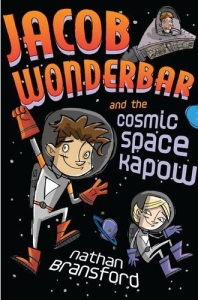 Need to see an ACTUAL query letter before you’ll know how to write one? Here is the query letter Author (at the time agent) Nathan Bransford:
Need to see an ACTUAL query letter before you’ll know how to write one? Here is the query letter Author (at the time agent) Nathan Bransford:
Dear Ms. Drayton,
As a young literary agent with Curtis Brown Ltd. I have long admired Inkwell, as well as your strong track record. To paraphrase Douglas Adams, if you searched for a book that was almost, but not quite, entirely unlike THE BOOK THIEF (which I absolutely loved), you might just have JACOB WONDERBAR AND THE COSMIC SPACE KAPOW, a middle-grade-and-up science fiction novel that I just completed. Still fun! But no one dies – Mr. Death would be lonely.
Jacob Wonderbar has been the bane of every substitute teacher at Magellan Middle School ever since his dad moved away from home. He never would have survived without his best friend Dexter, even if he is a little timid, and his cute-but-tough friend Sarah Daisy, who is chronically overscheduled. But when the trio meets a mysterious man in silver one night they trade a corn dog for his sassy spaceship and blast off into the great unknown. That is, until they break the universe in a giant space kapow and a nefarious space buccaneer named Mick Cracken maroons Jacob and Dexter on a tiny planet that smells like burp breath. The friends have to work together to make it back to their little street where the houses look the same, even as Earth seems farther and farther away.
JACOB WONDERBAR AND THE COSMIC SPACE KAPOW is 50,000 words and stands alone, but I have ideas for a series, including titles such as JACOB WONDERBAR FOR PRESIDENT OF THE UNIVERSE and JACOB WONDERBAR AND THE VACATIONING ALIENS FROM ANOTHER PLANET. I’m the author of an eponymous agenting and writing blog.
I’d be thrilled if you would consider WONDERBAR for representation, and a few other agents are considering simultaneously. Thanks very much, and hope to talk to you soon.
Nathan Bransford
Here are a few other places to look:
Nathan Bransford dissects a really good query letter and extoll its virtues.
Click Here to Visit Galleycat. They have 23 Agent Query Letters That Actually Worked.
Nonfiction writers don’t need to have a completed fiction manuscript. They only need a proposal before seeking representation from an agent. Here’s are books and places to help with writing a proposal:
Talk tomorrow,
Kathy
Filed under:
Advice,
Agent,
demystify,
How to,
Process,
reference Tagged:
AgentQuery,
How to write a query letter,
Nathan Bransford,
Query Letters 

"What happens to your characters isn't what drives the story. It's how your characters respond to those events that makes up the plot."
---blog commenter Theresa Milstein
I think this is very well said in a nice compact phrase.
**but needed a writer to make it sound right!

By: Kathy Temean,
on 12/10/2012
Blog:
Writing and Illustrating
(
Login to Add to MyJacketFlap)
JacketFlap tags:
Author,
Book,
inspiration,
Process,
revisions,
How to,
Bitterblue,
Journey of Writing a Novel,
Karen Cashore,
Kathy Dawnson,
Add a tag
 Bitterblue was named a New York Times Book Review Notable Children’s Book of 2012.
Bitterblue was named a New York Times Book Review Notable Children’s Book of 2012.
The New York Times in their review said,
“Some authors can tell a good story; some can write well. Cashore is one of the rare novelists who do both. Thrillingly imagined and beautifully executed, “Bitterblue” stands as a splendid contribution in long literary tradition.”
To celebrate Karen Cashore has posted the story of the journey of writing her novel BITTERBLUE, complete with examples of written pages.
She writes all her books longhand. That alone is quite a feat to me. I’d be lost without my computer.
Below are some of the things she showed and talked about:

What you see above is fairly typical: I write, I scratch out a word here and there, I scratch out a line, I change things; then I put it away for the day, come back the next day, realize the entire thing is crap, and cross the whole page out with a big X.
Once I’ve written 40 or 50 pages — or, essentially, get to a point where I’m starting to worry about the house burning down (though I do keep my notebook in a fireproof, waterproof safe) — I transcribe my handwriting into my Word document using voice recognition software (because I can’t type much at all without pain). The transcription, like every other moment when I’m looking at my work, is an opportunity for crossing more things out (symbolically) and changing things.
That’s my essential process for every book. But, of course, there’s more to it. For example, while I write, I scribble cheery, encouraging notes to myself.

I am skipping a lot of info that Karen shared, but after three years and 800 pages, she finished the first draft and sent it off to her editor, Kathy Dawson. When Kathy got back to her after reading the manuscript, this is how the conversation:
Kathy Dawson: “This is going to sound like a crazy idea, but now, at the beginning of the revision process, is the time to voice crazy ideas. Would you consider starting again from scratch?”
Karen: !!!!!!!!
*insert nervous breakdown*
*insert perspective*
*insert reconsideration*
*insert realization that she is 100% right*
Here’s the reason this ended up being the best thing my editor could have said. Within that 800-page mess, the final story was all there. If you were to read Bitterblue‘s first draft, you would come away with essentially the same story a person reading the final book comes away with. But there was a lot of extra, unnecessary stuff in there, too; I’d spent a lot of space working things out for myself that didn’t really need to be worked out for the reader.
There were extra characters who could be consolidated into fewer people to simplify things. There were plot complications that didn’t need to be so complicated. The themes were buried in crap; they weren’t shining. There was an earthquake! (Literally. One plot point was an earthquake.) The story I was trying to tell didn’t need an earthquake.
Now, normally when revising, I sit down with the printout of the draft I have and start crossing things out, working with what I’ve got, molding, trying to change the shape of an existing thing into something new. But here was my editor suggesting I start again from scratch.
I put the draft to the side, where I could reach it, but where it wasn’t right in front of me. I pulled a blank sheet of paper toward me. And I played what was essentially a mental trick on myself: instead of determining to decide what to get rid of, what to change the shape of, what to mold, I said to myself, “I’m writing a book. La la la, here I am, writing a brand new book. Hmm. What, from this pile to my side, might I add?“
Cutting a lot more out of Karen’s journey; the second draft of Bitterblue took Karen about five months, “if I recall correctly. Five and a half? Easily the longest revision of my life so far.”
And what happened after she finished Draft 2?
Her editor continued to send her amazing, helpful letters; friends read and gave feedback; and she revised it several more times. In total it took her four years to finish.
Here is the Link: http://kristincashore.blogspot.com/2012/12/pictures-of-book-being-made.html. It is a good read.
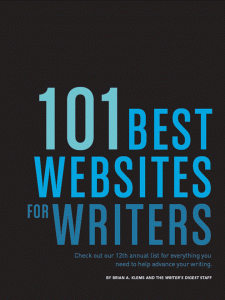
IT IS TIME TO NOMINATE WRITING AND ILLUSTRATING www.kathytemean.wordpress.com for the WRITER’S DIGEST’S 101 BEST WEBSITES FOR WRITERS!
If you have enjoyed the articles and information you received everyday this year, please help by dominating my blog. Submit an email to [email protected] to nominate my blog www.kathytemean.wordpress.com
I would greatly appreciate your help.
Thanks!
Talk tomorrow,
Kathy
Filed under:
Author,
Book,
How to,
inspiration,
Process,
revisions Tagged:
Bitterblue,
Journey of Writing a Novel,
Karen Cashore,
Kathy Dawnson 


By: Kathy Temean,
on 12/9/2012
Blog:
Writing and Illustrating
(
Login to Add to MyJacketFlap)
JacketFlap tags:
Author,
Events,
poetry,
writing,
authors and illustrators,
How to,
Highlights Foundation,
Poetry Workshop,
Conferences and Workshops,
David L Harrison,
Add a tag
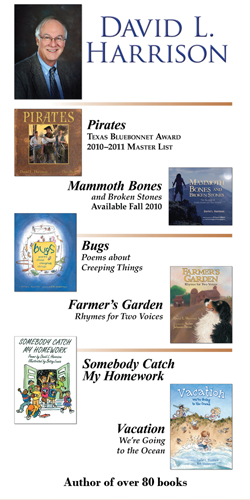 Some of you might remember David Harrison from the New Jersey Annual Summer Conference. He was the keynote speaker in 2010 and also did an Intensive and a number of workshops to help our members.
Some of you might remember David Harrison from the New Jersey Annual Summer Conference. He was the keynote speaker in 2010 and also did an Intensive and a number of workshops to help our members.
Well, David is conducting a Poetry workshop this coming year for the Highlights Foundation. I am letting you know this early, because the space is limited and you might not get a spot if you wait.
If you decide to attend, I can let you know that David is extremely helpful in giving his time and expertise to other writers and he is very saavy about social media and new technology.
You can visit his website at: www.davidlharrison.com or his blog dedicated to poetry: www.davidlharrison.wordpress.com
Here is the information about how the workshop 5 -day layout and what you will learn.
Highlights Foundation
Poetry for the Delight of It
Workshop Description
Date: September 28 – October 3, 2013
Arrive Saturday, September 28, at 3:P.M. for a tour of HIGHLIGHTS FOR CHILDREN and Boyds Mills Press. Ends Thursday, October 3, after lunch.
Designed For: From budding poet to published veteran, we learn and teach at every stage. If you like to think, talk, write, and share poetry, this one’s for you.
Limited participants
Group activities:
- Four key workshops:
- Conceiving ideas for poems
- Rough drafting
- Revising & Rewriting
- Tips on marketing
- Discuss and practice poetic techniques
- Verse and free verse: pros and cons
- Become better readers of our work
- Learn what to look for in good/bad poetry
- Become better critics of our work
- Meet and hear special guests
Individual activities will include time to:
- Practice writing what you’re learning
- Be still with your thoughts
- Start something new
- Meet one-on-one with your workshop leader
- Have your work critiqued by your workshop leader
- Fun, impromptu gatherings to share poems
- Chance to learn from others
What you will accomplish:
- Write poems
- Practice fundamental elements of poetry
- Return home excited about the new poems you will write
What we will accomplish:
- Make you a better poet
- Create a community of poets

IT IS TIME TO NOMINATE WRITING AND ILLUSTRATING www.kathytemean.wordpress.com for the WRITER’S DIGEST’S 101 BEST WEBSITES FOR WRITERS!
If you have enjoyed the articles and information you received everyday this year, please help by dominating my blog. Submit an email to [email protected] to nominate my blog www.kathytemean.wordpress.com
I would greatly appreciate your help.
Thanks!
Talk tomorrow,
Kathy
Filed under:
Author,
authors and illustrators,
Conferences and Workshops,
Events,
How to,
poetry,
writing Tagged:
David L Harrison,
Highlights Foundation,
Poetry Workshop 


By: Kathy Temean,
on 12/7/2012
Blog:
Writing and Illustrating
(
Login to Add to MyJacketFlap)
JacketFlap tags:
Process,
authors and illustrators,
Juana Martinez-Neal,
How to,
Illustrator's Saturday,
McGraw Hill,
Literary Circle,
picture books,
inspiration,
Add a tag

Juana Martinez-Neal was born in Lima, Peru and has been illustrating since she was 16 years old. Juana was awarded the Illustrator Mentorship in 2011 by the Society of Children’s Books Writers and Illustrators (SCWBWI).
In summer 2012, she was awarded the prestigious SCBWI Portfolio Award Grand Prize. Juana has illustrated for educational publishers including McGraw-Hill and Capstone Publishers, as well as Cricket Magazine Group and Nestle, Inc. Juana attended the Pontificia Universidad Catolica del Peru – School of Fine Arts.
In 1995, she moved to the United States and now lives with her young family in Scottsdale, Arizona.
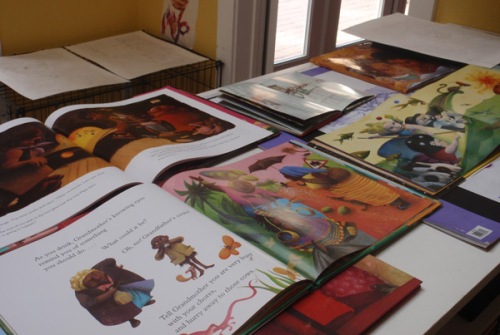
While I’m working on my books, I always keep books open on a lay out area that I have next to my table. I have books illustrated by Ana Juan, Rebecca Dautremer and Yuyi Morales this time.
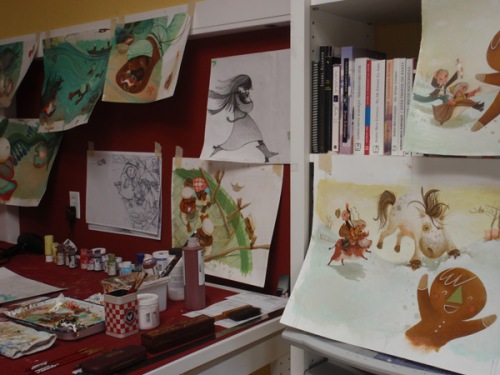
I hand completed pieces in front of my. My bookshelves get covered with artwork, too. I need to be able to look at the work while I’m painting. I’ll always find something that I need to tweak after a couple of days of completing a piece.
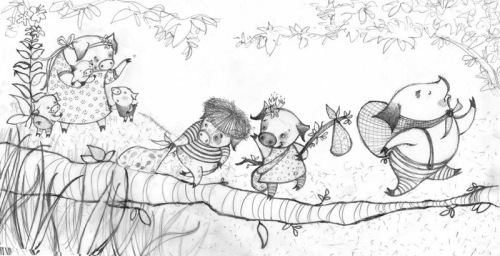
Final Sketch for “Three Little Pigs” included in the 2013 Storybook Brushes Wall Calendar.
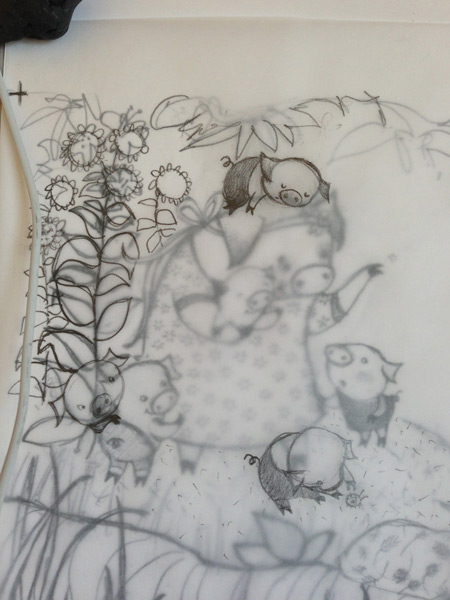
I always do my tweaks the old-fashioned way: tracing paper over sketches.
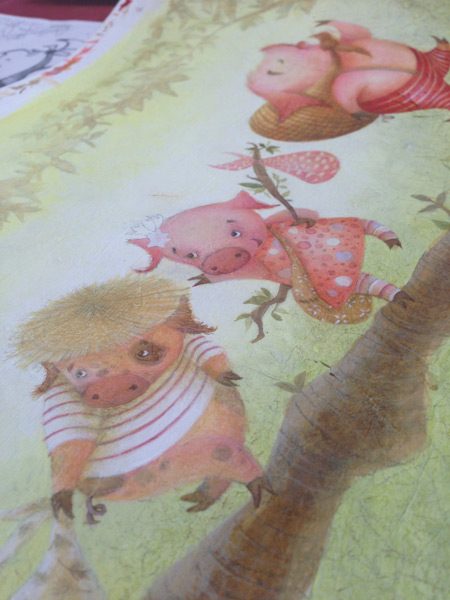
Detail of “Three Little Pigs” while still in process of finishing the piece.
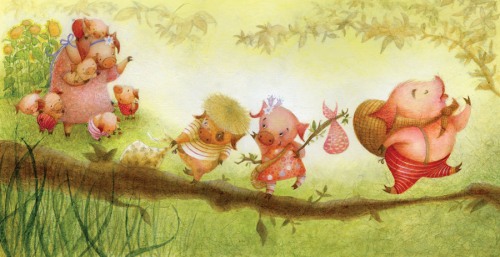
Final Illustration “Three Little Pigs” included in the 2013 Storybook Brushes Wall Calendar.
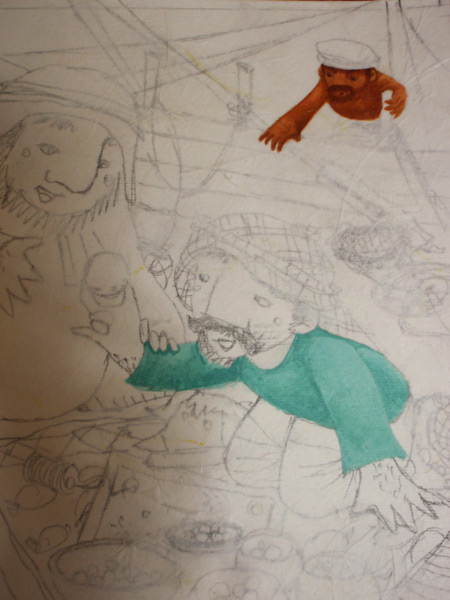
I have transferred my sketch to the paper and laid paper on top to create texture. I start painting with acrylics.

I continue painting. I paint with layers and keep adding details as I’m getting areas done.
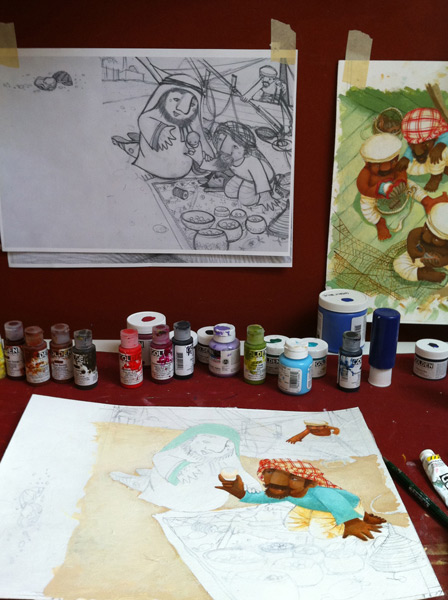
I refer to my final sketch and keep other pieces from the books close so I keep colors and features consistent throughout the book.
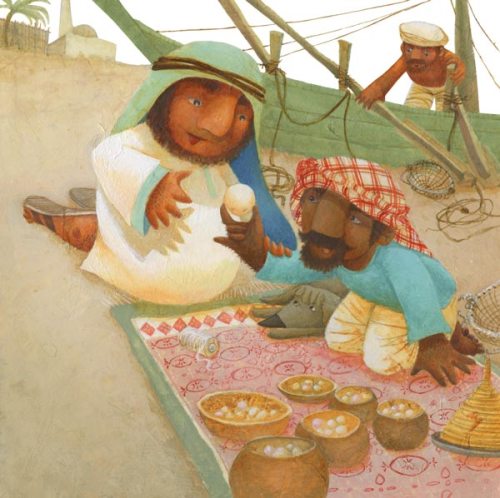
You attended Pontificia Universidad Catolica del Peru – School of Fine Arts, before moving to the United States. Could you tell us a little bit about the school and some of the classes you took?
Back when I attended the School of Arts at PUCP in the early 90’s, it was a 6-year art school. The first 2 years were core art classes. You had to take composition, life drawing, sculpture, intaglio, serigraphy, woodcut, perspective, and more. You also took classes like Art History, Anatomy, Mathematics, Psycology, etc. Years 3 and 4 were Specialty years. You chose between the 5 specialties: Painting, Sculpture, Printmaking, Graphic Design or Industrial Design. Classes focused on your specialty. The last 2 years were Studio years, mainly focused on developing your work and style.
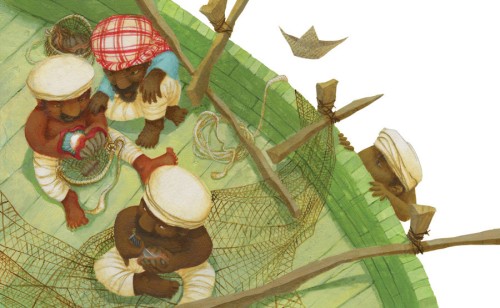
Interior art from “Dana’s Trip” published by Kalimat November 7, 2012.
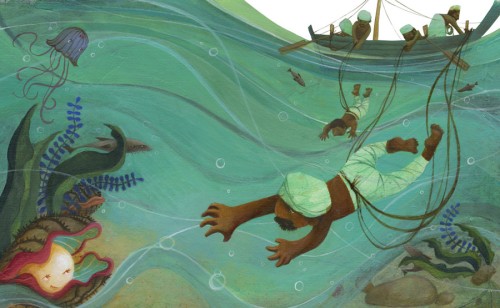
Do you feel your experience at the college helped develop your style?
Attending art school gave me the art concepts that I used until today. I think attending art school is invaluable.
Have you taken any art classes, since you moved to the US?
Yes, I have taken classes at various colleges, institutes and art centers. I’ve taken from linoleum printmaking, mixed-media techniques and dark room photography; to more software oriented classes like Photoshop and Illustrator at UCLA extension back when I lived in LA.
My goal is to take at least 1 workshop a year. More if time and deadlines allow me. I believe that every class gives me tools that I can apply to my illustration, mixed media work. Plus it takes my mind away from my regular work.
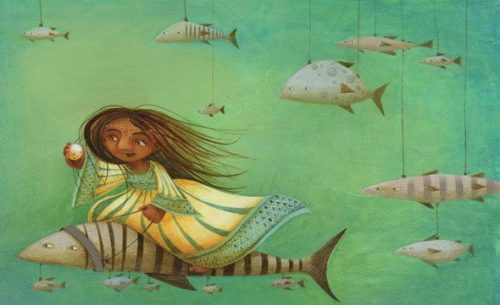
What was your first book?
My first book was a “The Wall”.
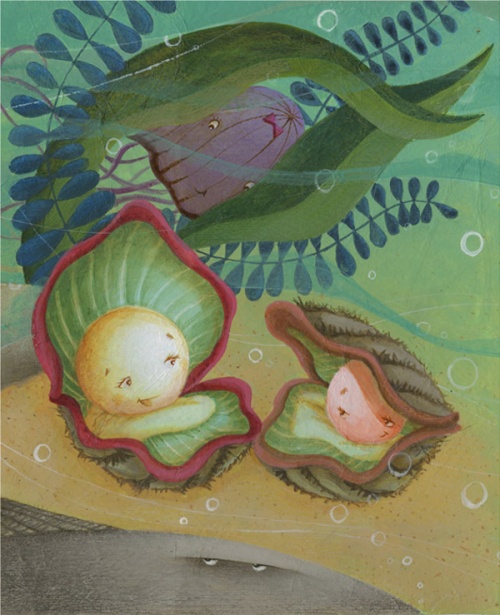
How did you get that contract?
“The Wall” was a collaborative book written by several authors from the Phoenix’s Writers Club. “The Wall” was a chapter book and they needed black and white interior illustration plus a cover. This was back in January of 2006, I was just getting back to children’s illustration.

The Wall was published by Neelie Publishing Who is Neelie Publishing? I see they are in Arizona. Is that how you connected with them?
Neelie Publishing is a small publishing house in Arizona. Eileen Birin is the author that runs it and she uses Neelie to publish her books. Eileen was one of the authors from “The Wall”.
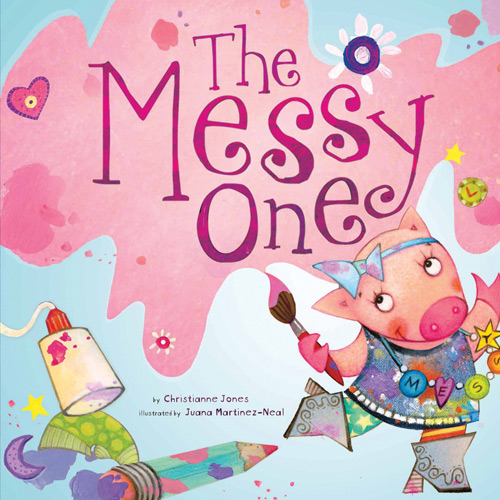
Juana Illustrated The Messy One which came out in January 2012.
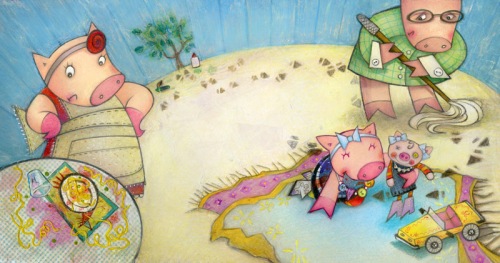
How did this opportunity come to you?
One of the Art Directors from Capstone made a call to illustrators. I emailed some samples and a couple of days later I got the offer for “The Messy One”.
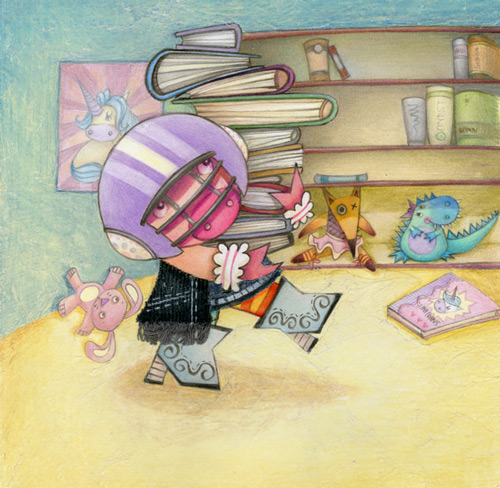
Is Picture Window Books an umbrella name that many small publishers use?
No. Picture Window Books is the Picture book division of Capstone Publishers in Minnesota – http://www.capstonepub.com/category/LIB_PUBLISHER_PWB

Have you seen your work change since you got out of art school?
Immensely. When I attended art school, I was a painting major. Although my work was a lot more whimsical and representational than the rest of people in my class, I wanted to force a more artistic approach to how I viewed the world. Back then, I didn’t know I could be and make a living as a children’s illustrator. Ten years had to go by and I had to move to the US to realize that I could be a children’s illustrator. Thinking back, the clues were there all along but I just wasn’t ready to see them.
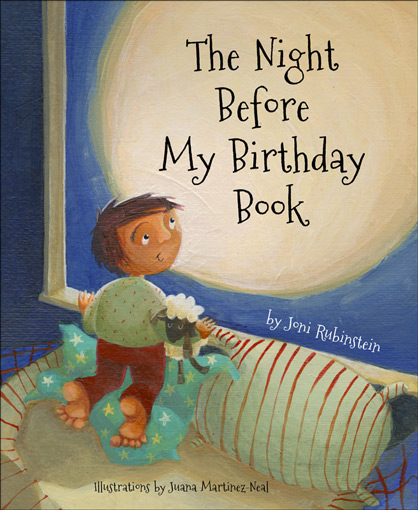
Book Cover Art for The Night Before My Birthday above and three interior illustrations below.



Do you have a favorite illustrator?
Yes, Rebecca Dautremer.

Ellie the Different Elephant cover art above – Interior Art Below.
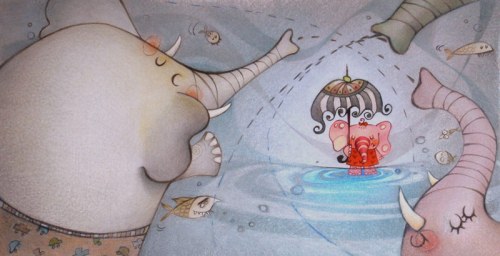
How did the author of Lellie the Different Elephant find you?
She saw my work at www.childrensillustrators.com.
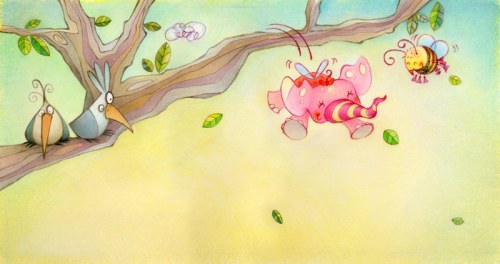
I notice that Wasteland Press is a self-publishing book company. What did you think of the quality of the Lellie the Different Elephant put out by them?
They did a good job. I have no complaints.
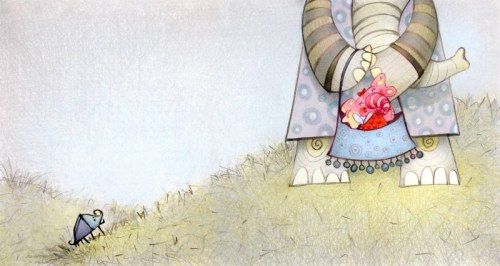
What was the first piece of art you did and got paid for?
A black and white illustration that was published in the SCBWI Bulletin. I still have the check. Never cashed it and never will.

This was done for a workshop Juana took in September 2011 with Joann Hill, Art Director from Disney Hyperion. The assignment wasto illustrate “The Gingerbread Man” story.
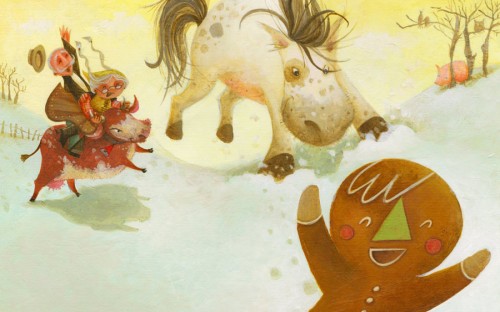
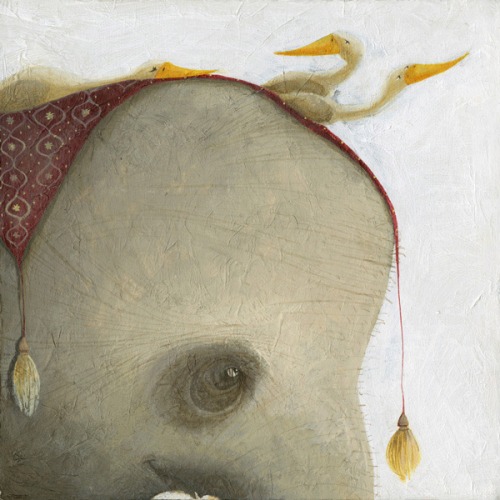
How have you found that experience of working with authors wanting to self-publish their book? Do you feel they give you the freedom you want?
My 10 years working with graphic and web design clients taught me how to listen to clients and how to hear to those subtle red flags. To me it was pretty simple: if during the first meetings I heard anything that made me feel uneasy, I would say no to the project.
Overall, I feel fortunate to have worked with some great authors. They have all believed in my work and vision. They gave me their ideas and told me what they wanted to see but always believed in my work and experience and gave me freedom.
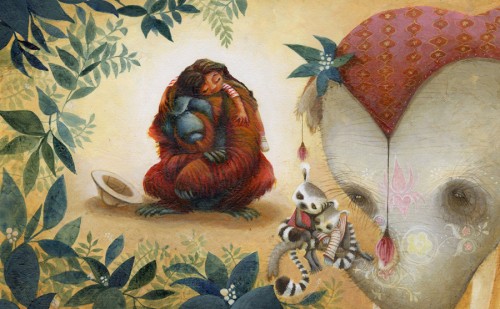
Can you make enough money illustrating books for self published writers?
I was and I’m sure you still can. I have stopped taking self-published projects for some time now. I’m focusing on something else at this moment.
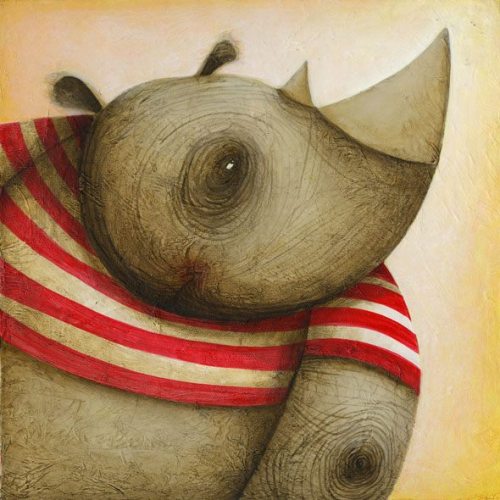
What goes into the decision to work with a specific author?
I needed to like the story. I have to see the illustrations in my head the very first time I read the manuscript. I also had to believe in the author’s mission, motivations and ideas.

Do you have a contract written up to use?
I never start working on a project until I have a signed contract and the deposit with me. The Graphic Artist Guild has the “Handbook of Pricing and Ethical Guidelines” that includes sample contracts. I would recommend buying it: https://www.graphicartistsguild.org/handbook/
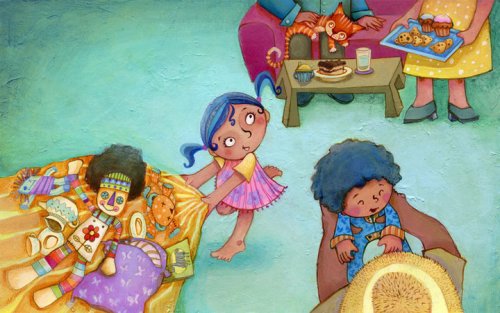
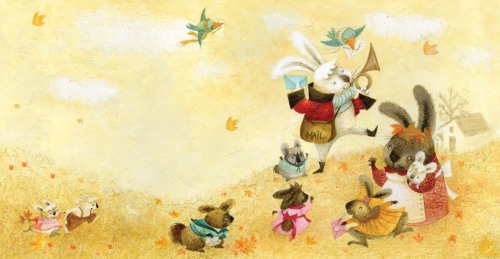
Do you have a favorite medium you use?
I’m a mixed media artist. I love using acrylic mediums, papers, acrylic paint and colored pencils.
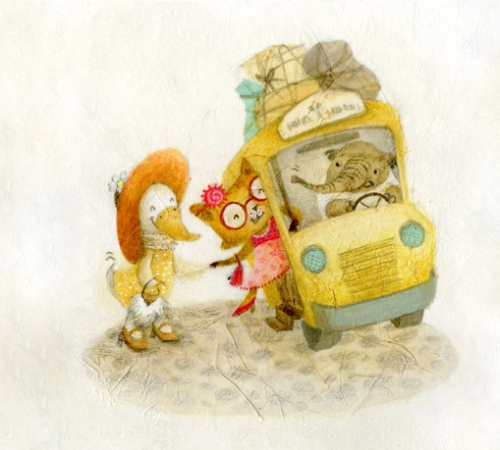
Do you take research pictures before you start a project?
I do research for every project. I occasionally take pictures if I need to figure out light or a body posture. Most of the time, I use Google images. I save, rename files and place them in an Inspiration Images folder for each project. Then as I’m sketching or painting, I go through my folder for reference.
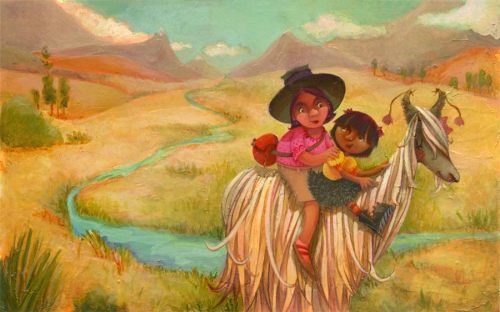
Of all the books that you illustrated, which one is your favorite?
This is a hard question. I have things that I love in all of the books. I really can’t pick only one.

Do you use Photoshop with any of your work?
Only while I’m tweaking sketches. Photoshop allows me to move things and characters around until the composition looks just right to me. I’m extremely anal and my sketches include everything that I will include in the final art.
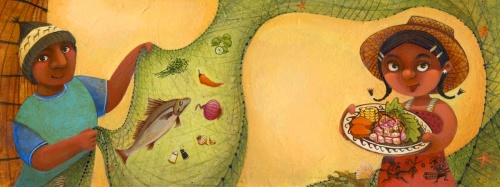
Do you have and use a graphic tablet?
Yes, I own one and have used one in the past but never for my illustration work. I’m a traditional artist. I find a strange pleasure looking at my artwork and knowing that everything that will be reproduced is right there in front of me. No tweaks, no fixes.

This piece was a 1 of the 5 Juana did for the Phoenix Zoo in 2011. It’s called “Tiger Teeth”. She donated the pieces to raise funds to benefit the Phoenix Zoo.
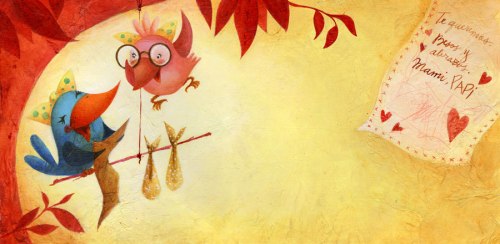
From Poppy’s First Day of School
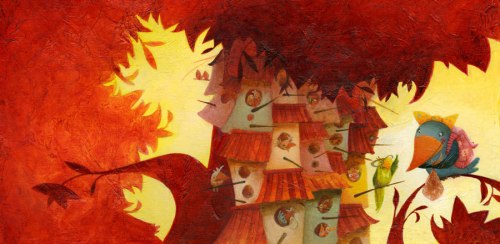
“Poppy Learns Something Special” Nestlé 2012
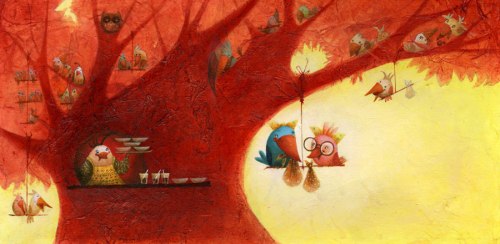
Cover and interior illustrations from Poppy’s Best Day Ever

Poppy The Best Day Ever and Poppy’s First Day of School: Are these both published books or are they books that you are working on?
Both published. “Poppy’s Best Day Ever” was published on August 2011. “Poppy’s First Day of School” on July 2012. Both were done for Nestle “El Mejor Nido” which is the Hispanic division of Nestle. The books are part of the company’s Summer reading program. They are not sold but handed out in Hispanic areas throughout the country. In 2011, 150,000 copies were handed out. 2012 they were more copies but I don’t know exactly how many.
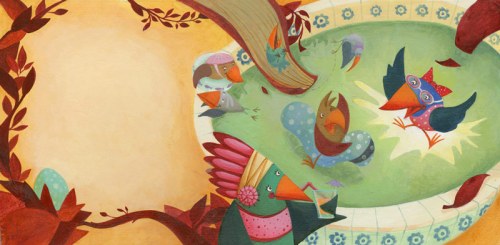
Do You still work with writer’s who want to self-publish their book and need an illustrator?
I no longer take on these kinds of projects.
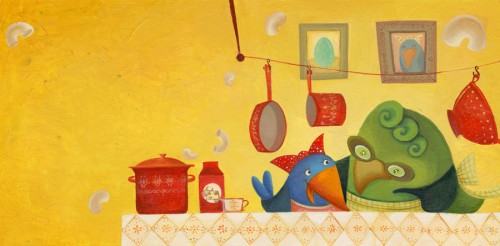

Do you work with ECKO House Publishing for them as a freelance artist or where you hired by the author?
I was also hired by the author to do the illustrations for the chapter book.
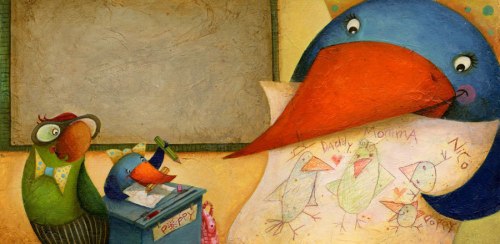
How did you and Stefanie Von Borstel at Full Circle Literary connect? Has that happened recently?
Stefanie and I met at SCBWI Los Angeles Conference this August. She saw my work at the Portfolio Showcase. We talked and had been talking for the last 3 months. We officially signed a couple of weeks ago.
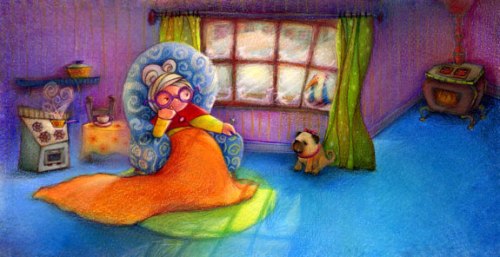
Have you ever thought of writing and illustrating your own books?
Yes, I have some stories I’m working on at the moment.

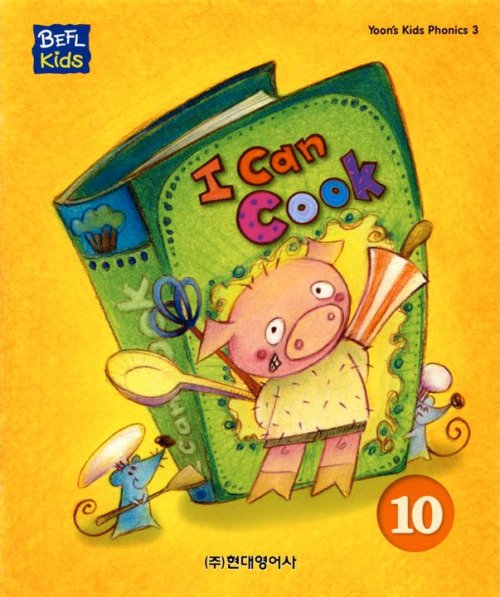
Do you have a studio in your house?
After working for years in spare bedrooms and dining room tables, we built my studio in 2005. Everything just as I wanted and dreamed it. From flat files in the walk-in closet to glass doors and skylights. It’ll be hard to move in a year.
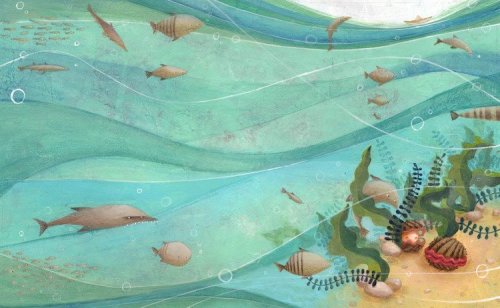
Do you follow any type of routine to attain your career goals?
I’m a simple person. I write them down in a piece of paper and look at them as often as I can. When I attain one, I remove it and add a new one to the list.

Are there any painting tips (materials, etc) you can share that work well for you? Technique tips?
If you use acrylics, try using gesso instead of white. It will make your colors more matte and chalky, more like gouache. I prefer that to the plastic, shiny look that you get as you add more layers of paint with acrylics.
Another tip, love your sketches but don’t let the sketch tell you how to paint. I transfer my sketches to paper and then I cover them with a base color, whichever I need. The sketch is there but looks really light. I don’t worry about covering it. I find that if I do it this way, I paint without worrying about details. Details will come in the next layer and I can always go over any area and tweak it until the painting is just right.

“Gee-Up, Neddy” Babybug Magazine July-August 2012
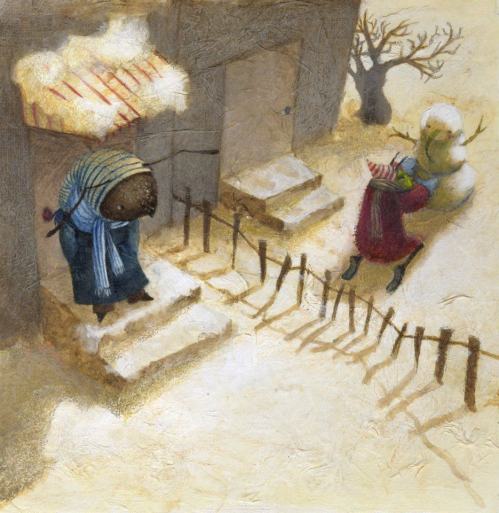
What kinds of things do you do to promote yourself?
I hand postcards at conferences and carry portfolios in both my iPad and my iPhone. I try to blog regularly and keep a FB page and a twitter account. I do try to do at least 1 series of blog posts a year of some sort. The last 2 years 3 children’s illustrators and I have had the November of Mini-Interviews (http://juanamartinezneal.com/blog/2012/10/03/the-november-mini-interviews-2012/ ). Just now, we have a new project: A collaborative 2013 wall calendar. We are 4 children’s illustrators from different parts of the world and are mailing those calendars to publishers. You can read about our group “Storybook Brushes” here: http://storybookbrushes.com. If you are interested in purchasing a copy, you can do so here: http://juana.bigcartel.com/product/2013-storybook-brushes-wall-calendar
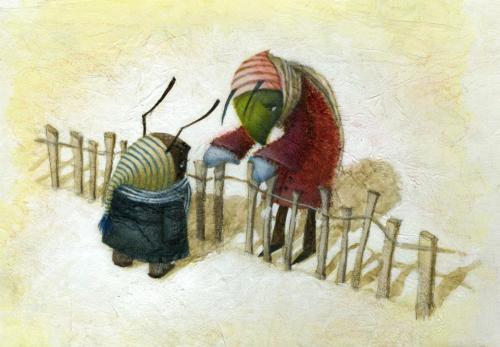
Above and below from the Ant and the Grasshopper

What are you working on now?
I’m working on a chapter book, a new Nestle Nido book, some magazine work and my personal projects.

Above and below from The Ant and the Grasshopper
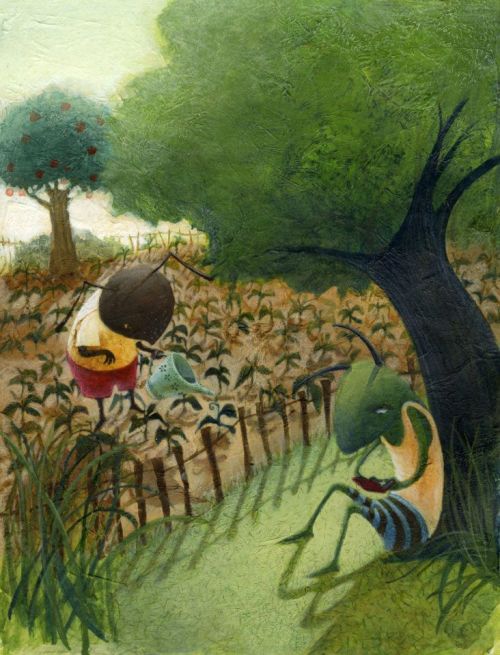
Are you the only artist in the family?
Nope. My father is a watercolor artist, my father’s father was an artist, my grandfather’s father was a violinist, my brother is an artist, my uncles were writers and painters. All on my dad’s side. My mom is a craft woman. She enrolled me in ceramics and painting classes since I can remember.
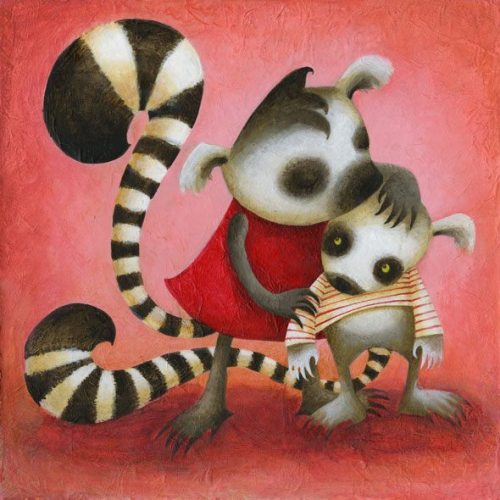
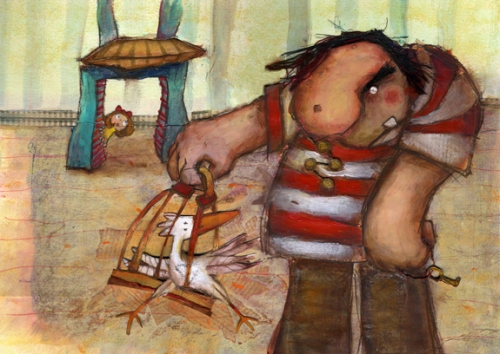
Did you always know that you wanted to be a Children’s Illustrator?
No. Everything just happened. My father was an AD for many advertising companies in Lima. Once when I was 16 he got an account for a toy company. My father is an incredible realistic artist but doesn’t know how to illustrate so he asked me to sit and draw some children for him. More to keep me busy, to tell you the truth. So I drew. I remember my dad’s eyes getting round and big when he saw what I did. He knew I was a children’s illustrator but I didn’t. At least, not yet.

With the market changing so rapidly. Many people are thinking about using e-books to publish their picture books. Do you have anything to share in this area?
Yes, remember you still have to consider that even if your book is digital, you will still have to pay the illustrator, the company that formats your ebook and the developers of your app. You then have to sell and promote it. And simply put, how many copies would you need to sell in order to get your investment back? I encourage you to search online for other people who have done e-books and apps and listen/read their stories. You must know in order to make an informed decision.

What are you working on now?
I’m working on a chapter book, a new Nestle Nido book, some magazine work and my personal projects.

Can you share your thoughts about self-publish your story?
I would not recommend it. Self-publishing a book is expensive – $20,000+. You will have to wear many hats, way too many in my opinion. You’ll be the writer, editor, art director, distributor, marketer and the venture capitalist. And being honest, each of those jobs are better done by someone who works full time doing only the job they excel at. That’s why I feel you should want to submit your manuscript the traditional way, first.

Do you have any words of wisdom to share with other illustrators?
I don’t consider myself a wise person but I can share one thing: Always say yes. You never know what opportunities will come from that initial project.
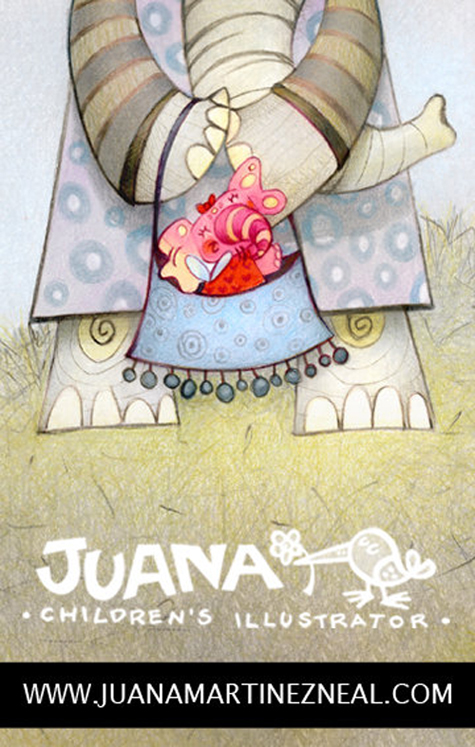
Juana, thank you so much for sharing your talented illustrations and process with us. If you would like to see more of Juana’s artwork or follow her, you can find her using: Website+Blog http://juanamartinezneal.com
Twitter http://twitter.com/juanamartinez
Facebook http://www.facebook.com/juanamartinezneal.illustrator
Please take a minute to leave Juana a comment. I appreciate it. Thanks!
Talk tomorrow,
Kathy
Filed under:
authors and illustrators,
How to,
Illustrator's Saturday,
inspiration,
picture books,
Process Tagged:
Juana Martinez-Neal,
Literary Circle,
McGraw Hill 


By: Kathy Temean,
on 12/6/2012
Blog:
Writing and Illustrating
(
Login to Add to MyJacketFlap)
JacketFlap tags:
inspiration,
submissions,
authors and illustrators,
opportunity,
How to,
need to know,
demystify,
Writer's Prompt,
Little Brown & Co,
Kate Sullivan - editor,
Add a tag
Each Month I try to give Writers and Illustrator a chance to be noticed and further their craft.
If you are one of the writers who liked the First Page Picture Prompt, you can use the illustration below by Versper Stamper to inspire a new first page. www.vespersongs.com/
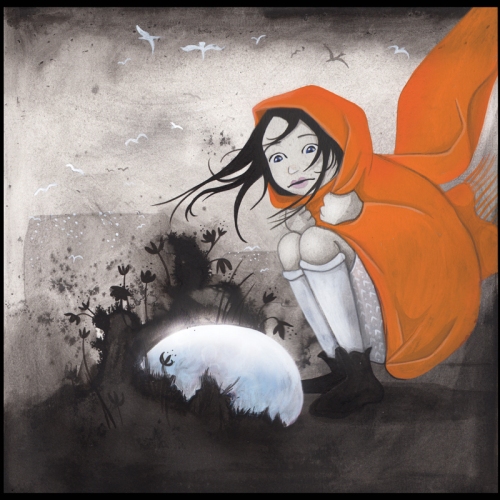
1. If you are writing a book, you have the chance for editor Kate Sullivan from Little, Brown, & Company to read and critique your first page.
2. If you are a published author, you have a chance to be the Featured Author of the Month – be interview and get your book or book seen.
3. Illustrator’s have a chance to be featured on Illustrator Saturday.
4. Illustrators who have already been featured on Illustrator Saturday, Illustrators who want t be considered for Illustrator Saturday, or Illustrators just starting out and do not have enough artwork to be featured, can still get their artwork or new illustrations seen by professionals in the industry by participating.
In order to narrow the submissions down, I have come up with the following:
1. If you choose to follow me or are already following me, you will get your name put into the basket.
2. If you put a link up on your blog or website, you will get your name put in the basket. If you have both, you can choose to put a link on both and get your name in twice.
3. Do two Tweets about a post on my blog and get your name in the basket. This can be repeated three additional times for a total of four times in the basket. Tweets must be done on separate dates.
4. Post something on Facebook and get your name in the basket.
5. Do it all and you will have your name in the basket eight times. On November 24th I will put all the names in the basket and I will pull out ten names and read the first pages that go with the name. Out of those ten, I will pick 4 to send to our quest critiquer for November.
Here is what you need to do:
WRITERS: Please attach your double spaced, 12 point font, 23 line first page to an e-mail and send it to kathy(dot)temean(at)gmail(dot)com. Also cut and paste it into the body of the e-mail. Put “December First Page Critique” or “December First Page Picture Prompt Critique” in the subject line. Make sure you have your name on the submission, a title, and indicate the genre. Also let me know which steps you took, so I will know how many times to put your name in the basket. If you end up doing more things to get additional entries, then e-mail me by December 19th (This is a few days earlier, because of the holidays) with the updated number you have completed. Please let me know what you have done and when, so I can check it out.
Published Children’s Book Writers: You can also participate by doing one or more of the five above steps to get your name in the “Book Feature” hat. If your name is drawn, I will do a post featuring your book, an interview, bio, and pictures of the cover and interior art (if that applies). Author Susan Hood was the winner for October. Ann Rinaldi was the winner in November.
Please put “December Children’s Book Promo” in the subject area and let me know the steps you took, so I can put the correct amount of slips in the basket. Please send it to kathy(dot)temean(at)gmail(dot)com. Deadline November 24th.
ILLUSTRATORS: If you are an illustrator, you can participate and choose to get featured on Illustrator Saturday or get your new book featured by following the five steps for the writers. Please put “December Illustrator Feature” in the subject area. I will need to know what steps you completed to get into the basket and I will need a few illustrations or if you want to promote your book, then send the name and cover along. Also include a promotional blurb. Please send it to kathy(dot)temean(at)gmail(dot)com.
Call for illustrations for December (You do not have to be narrowed down to send in a piece of art for December). I’m looking for Christmas, Chanukah, New Years, and or a winter scene illustrations. You do not have to wait, I will post the illustrations as they come in. I would like to have them no later than November 25th, since it is hard to find the right place for your work, instead of squeezing it in at the end of the month. I would love to have something to go with the election on Tuesday. Please make sure the illustration is at least 500 pixels wide and include a blurb about yourself and a link to see more of your work. Please send it to kathy(dot)temean(at)gmail(dot)com and put “December Illustration” in the subject box.
Talk tomorrow,
Kathy
Filed under:
authors and illustrators,
demystify,
How to,
inspiration,
need to know,
opportunity,
submissions,
Writer's Prompt Tagged:
Kate Sullivan - editor,
Little Brown & Co 

November brings fish, frogs, owls, and so much more.: FREE full-sized pages now include space to start drawing right away. Have fun!
I get query letters from formerly-represented authors enough so that it's not rare. Not common but not rare. Up until ten years ago, the main reason the authors were agentless was either death, retirement or illness of their former agent.
Now I'm seeing a whole new, very disturbing, category: my agent quit.
So the first thing to remind everyone is that when you receive an offer of representation, you'll want to make sure your agent is in it for the long haul. How to do that? My experience tells me that all these agents who are quitting have been in the business for five years or fewer, and their sales are not very high. In other words, people who found out being an agent was a whole lot harder than it looked on Twitter.
But, if you find yourself without an agent here's what to do:
1. Get out your author/agency agreement. Are you represented by the company, or the specific agent?
If you are represented by the company, get in touch. Email first, then phone. A very short email like this:
Hello, I was represented by Agent Houdini. My project SHARK TANK NOIR is on submission. Can you tell me which agent will be handling my work now? Thanks for your time and consideration.
Even though this feels like a total disaster to you, try to keep the screeching and moaning to a minimum. Trust me, it's pretty hard on this side of the aisle too.
If you don't hear back in five days, you phone. Politely.
If you don't get a reply in five days, you terminate your representation.
Certified mail.
Just an aside: this is why it's CRUCIAL that you keep the submission list of where your work is. It's absolutely ok to ask for the list of where your work is when the submission process starts, and to ask for updates on a regular, scheduled basis. (Once a month, once every two weeks; NOT daily; NOT hourly!)
2. If you're represented by the agent, not the agency, get in touch with the head of the agency. Short email:
Hello, I was represented by Agent Houdini. My project SHARK TANK NOIR is on submission. Is another agent there interested in representing me? Thanks for your time and consideration.
Again, you give them five days.
If no reply, telephone.
If no reply, terminate.
3. If the agency does not continue to represent you, you'll need a new agent.
1. Check the author/agency agreement for the clause that covers how long after you've terminated representation you have to pay a commission. In our agreement it's six months. That means if you fire me, and I've sent your work out, you can't sell it to a publisher I've sent it to without paying me a commission unless six months have elapsed between the termination and the sale.
If this isn't spelled out in your author/agency contract, you spell it out in the termination letter you send via certified mail. Of course, you'll insert language that says you can sell your project tomorrow and not owe a commission, not six months.
2. Draft an email query about your project, not about your situation. You need an agent for your work, not your woes.
DO include a paragraph about your situation though. Be brief. Be clear. Try not to wring your hands.
My agent, Henry Houdini, is no longer agenting. My project was on submission with 12,204 editors as of 1/1/11. In my termination letter to Houdini, Hoffa, and Crater, I included a paragraph that says they are not entitled to commission as of 2/1/11. The author/agency agreement does not have a clause covering this situation.
And then you interview agents. And you look for the ones who are in it for the long haul. Here's what you ask:
1. WHAT HAVE YOU SOLD? An agent who hasn't sold a lot is more likely to hang up her spurs than one who is doing ok. Don't rely on Publishers' Marketplace for this data. ASK the agent.
2. Do you love your job? An agent who is looking to switch careers is an unhappy agent. Trust your senses on this one.
3. What happens if you do decide to leave agenting? Most of us have given careful thought to what I call the "crosstown bus" scenario. Not all leaving is voluntary. If I get hit by a bus, my clients are covered. I wouldn't sign with an agent or agency who hadn't made the same provisions.
And remember, this is not the end of the world. It feels like epic disaster right now, but you'll recover. And bounce back. AND have a great story: "Remember when I found out my agent left the biz cause she changed her Facebook status?" You need good stories for your book tour. Think of this one as the first.
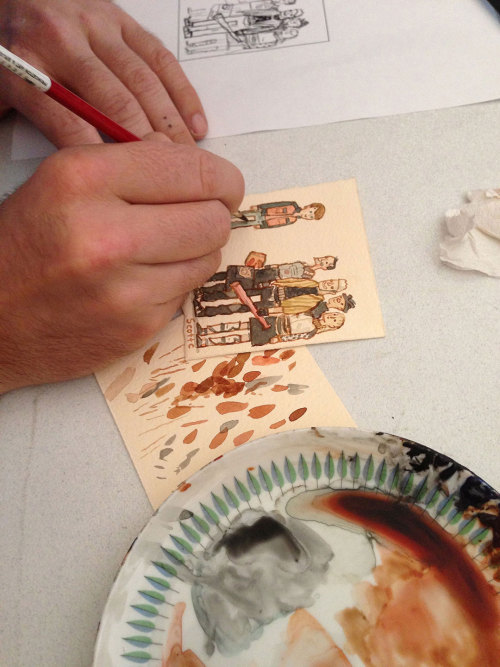
If you’ve never had the pleasure of watching Scott C livestream the creation of one of his Great Showdowns, then you’re in luck — Scott just posted a detailed step-by-step post on his process.


By: Kathy Temean,
on 8/5/2012
Blog:
Writing and Illustrating
(
Login to Add to MyJacketFlap)
JacketFlap tags:
Advice,
workshop,
revisions,
article,
How to,
Conferences and Workshops,
Kami Kinard,
The Boy Project,
Catol Lindstrom,
Tension in Revision,
Add a tag
 Carole Lindstrom sent in this article after taking great notes at KAMI KINARD’s Workshop TENSION IN REVISION.
Carole Lindstrom sent in this article after taking great notes at KAMI KINARD’s Workshop TENSION IN REVISION.
Kami has a middle-grade novel, “The Boy Project (Notes and Observations of Kara McAllister)”, that was published by Scholastic in January 2012, and it’s a funny, fun read with some important, appropriately understated messages.
I love the way Kami’s first page, so I thought I would share it with you.

Click Here to Read More
Here is what Carol has sent in about Kami Kinard’s TENSION IN REVISION Workshop
Dig deeper with both plot and dialogue
There should be conflict on every page
Every page or spread needs a decision
CHARACTER TENSION
What is the number one goal of the protagonist?
What is the number one goal of the antagonist?
How are their goals relevant on an emotional level? How do they conflict?
THE PROTAGONIST AND THE ANTAGONIST
These two characters and their conflicting goals provide the tension central to every story.
Nothing should be easy for the protagonist. Your plot has to twist and turn and so does your character’s emotional journey.
Ways to Create More Tension:
1. Try adding additional characters t create tension
2. Create new conflicts between existing characters
3. Give your character a new skill or have an old skill suddenly fail him/her
4. Give the story an emotional twist – can something happen that makes him/her unexpectedly sad, elated, depressed, frustrated?
PLOT TENSION
Plot – a series of scenes that lead to a climax
Scene – a unit of dramatic action with a beginning, middle and end
Every scene has to have tension. Draw a box around each scene so you can physically see where scenes are in your story to determine if there is tension.
SETTING TENSION
What is your setting? Are there places available to you within that world where you can increase the drama/tension of the setting?
Can you add a place if there isn’t one?
SETTING TENSION – CLIMAX
Where will the climax occur?
Can you add tension to that location?
Consider:
A high place – a roof top, bridge or cliff
A wild place – near a roaring river, a crashing ocean
A forbidden area – places your MC should not go
Weather can be a great source of tension because of its symbolism
Time of day – what time does climax occur? Could changing the time of day increase the tension?
An audience – will your scene have more tension in front of others?
Dialogue Tension – know what your character’s want BEFORE they enter into communication.
USEFUL ARTICLES/WEBSITES
The Emotions Thesaurus
http://thebookshelfmuse.blogspot.com/2008/05/disgust.html
Dialogue (Tension)
http://www.be-a-better-writer.com/writing-dialogue.html
1 Comments on Look into Tension in Revision, last added: 8/6/2012
 The other week I had a post about Kristina Swarner who illustrated ZAYDE COMES TO LIVE written by Sheri Sinykin after it was awarded the 2013 Sydney Taylor Honor Books for Younger Readers Award. Her art work is so wonderful, that I thought you would enjoy seeing more of her work.
The other week I had a post about Kristina Swarner who illustrated ZAYDE COMES TO LIVE written by Sheri Sinykin after it was awarded the 2013 Sydney Taylor Honor Books for Younger Readers Award. Her art work is so wonderful, that I thought you would enjoy seeing more of her work. First, I think about the concept, a lot. Sometimes for days. Once I think I have a good idea, I do a lot of really light, really rough pencil sketches on paper until the drawing looks right.
First, I think about the concept, a lot. Sometimes for days. Once I think I have a good idea, I do a lot of really light, really rough pencil sketches on paper until the drawing looks right. Then I do a tighter sketch, and trace it so that I can transfer it to linoleum or a vinyl block. I carve out the areas that will be light colored in the final piece, ink up the block, and make a black and white print on heavy paper.
Then I do a tighter sketch, and trace it so that I can transfer it to linoleum or a vinyl block. I carve out the areas that will be light colored in the final piece, ink up the block, and make a black and white print on heavy paper.




















































 If you have decided to self- publish, there are lots of things you need to know and consider. Don’t think you get to wiggle out of doing your homework and making a plan on the steps you need to take and things you need to consider.
If you have decided to self- publish, there are lots of things you need to know and consider. Don’t think you get to wiggle out of doing your homework and making a plan on the steps you need to take and things you need to consider. 
 “A style that consists of passive constructions will sap the reader’s energy. The difference between an active-verb style and a passive-verb style–in clarity and vigor–is the difference between life and death for a writer.” -William Zinsser On Writing Well.
“A style that consists of passive constructions will sap the reader’s energy. The difference between an active-verb style and a passive-verb style–in clarity and vigor–is the difference between life and death for a writer.” -William Zinsser On Writing Well.

 Yesterday we talked about writing a successful query letter. Today we are going to discuss how to find the right agent for those query letters. I know you might be saying, “Just give me an agent, any agent and I’ll be happy.” Well, be careful what you wish for, you might get it and it might not be pretty.
Yesterday we talked about writing a successful query letter. Today we are going to discuss how to find the right agent for those query letters. I know you might be saying, “Just give me an agent, any agent and I’ll be happy.” Well, be careful what you wish for, you might get it and it might not be pretty.  The goal of query letter is to elicit an invitation from an agent (or editor) to send in sample chapters or the whole manuscript.
The goal of query letter is to elicit an invitation from an agent (or editor) to send in sample chapters or the whole manuscript.  Need to see an ACTUAL query letter before you’ll know how to write one? Here is the query letter Author (at the time agent) Nathan Bransford:
Need to see an ACTUAL query letter before you’ll know how to write one? Here is the query letter Author (at the time agent) Nathan Bransford:



 Some of you might remember David Harrison from the New Jersey Annual Summer Conference. He was the keynote speaker in 2010 and also did an Intensive and a number of workshops to help our members.
Some of you might remember David Harrison from the New Jersey Annual Summer Conference. He was the keynote speaker in 2010 and also did an Intensive and a number of workshops to help our members. 





































































 Carole Lindstrom sent in this article after taking great notes at KAMI KINARD’s Workshop TENSION IN REVISION.
Carole Lindstrom sent in this article after taking great notes at KAMI KINARD’s Workshop TENSION IN REVISION. 
 Kirstie Edmunds is a children’s book illustrator from London, UK and is represented by the Prospect Agency in Brooklyn, NY. She moved to illustration following a career in graphic design and art direction, and has debuted this year with, ‘So You Want To Be A Rock Star,’ written by Audrey Vernick, for Walker/Bloomsbury, and, The Monster Who Lost His Mean’ by Tiffany Strelitz-Haber, and Henry Holt/Macmillan. Both Audrey and Tiffany are located in New Jersey - That is how I found her and her artwork. Like I have said before to picture book writers, get you illustrator to contact me and get featured. It is a great way to encourage sales.
Kirstie Edmunds is a children’s book illustrator from London, UK and is represented by the Prospect Agency in Brooklyn, NY. She moved to illustration following a career in graphic design and art direction, and has debuted this year with, ‘So You Want To Be A Rock Star,’ written by Audrey Vernick, for Walker/Bloomsbury, and, The Monster Who Lost His Mean’ by Tiffany Strelitz-Haber, and Henry Holt/Macmillan. Both Audrey and Tiffany are located in New Jersey - That is how I found her and her artwork. Like I have said before to picture book writers, get you illustrator to contact me and get featured. It is a great way to encourage sales.

 Final sketch for the page, re-composed. I’d usually take this and do a block-out, or some tonal studies, before taking it into final colour.
Final sketch for the page, re-composed. I’d usually take this and do a block-out, or some tonal studies, before taking it into final colour.







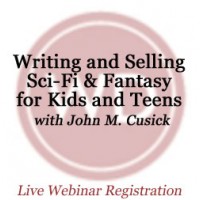 Last week I had dinner in NYC with Agent John Cusick from the S©ott Treimel NY Literary Agency. He told me about the live Webinar he is doing with Writer’s Digest on August 9th at 1pm. It is titled, Writing and Selling Sci-Fi & Fantasy for Kids and Teens. Since this is a hot genre and the fact that John did a fabulous job with the workshops he ran in June, I thought I would pass this information on to all of you Sci-Fi/Fantasy authors.
Last week I had dinner in NYC with Agent John Cusick from the S©ott Treimel NY Literary Agency. He told me about the live Webinar he is doing with Writer’s Digest on August 9th at 1pm. It is titled, Writing and Selling Sci-Fi & Fantasy for Kids and Teens. Since this is a hot genre and the fact that John did a fabulous job with the workshops he ran in June, I thought I would pass this information on to all of you Sci-Fi/Fantasy authors.




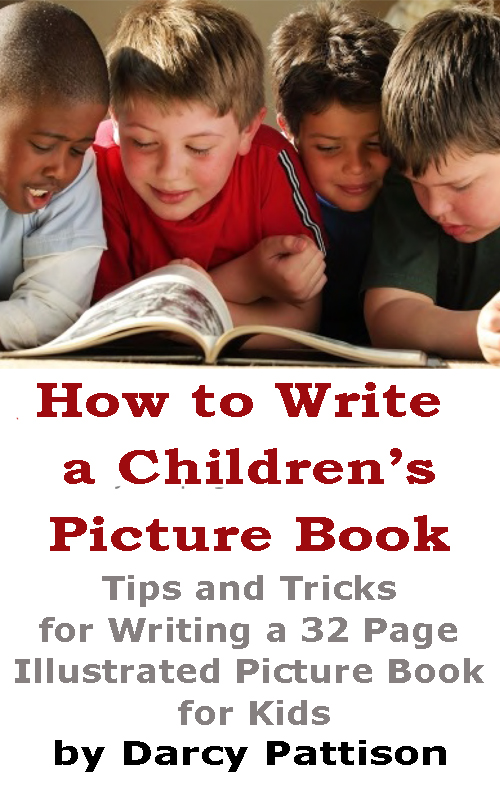

 Ann de Forest provided a session on “Reading as a Writer” during NJ SCBWI’s June conference. “Books that we read can be our teachers,” Ann explained. Part inspiration and part hands-on workshop, she noted that as writers, we should “read with an eye to craft.” She mentioned that author Laurie Halse Anderson recommends that for (approximately) every ten hours spent writing, five hours should be spent reading, with only an hour on the Internet. To achieve that ratio, writers can cut their time online, and experiment with reading on a schedule.
Ann de Forest provided a session on “Reading as a Writer” during NJ SCBWI’s June conference. “Books that we read can be our teachers,” Ann explained. Part inspiration and part hands-on workshop, she noted that as writers, we should “read with an eye to craft.” She mentioned that author Laurie Halse Anderson recommends that for (approximately) every ten hours spent writing, five hours should be spent reading, with only an hour on the Internet. To achieve that ratio, writers can cut their time online, and experiment with reading on a schedule.
Your work is absolutely gorgeous! I love the dreamlike quality, the textures and especially your sense of color! I am curious about how you get such wonderful texture from the linoleum print, though, because whenever I’ve done one the color is very flat. Also, how do you transfer your sketch to the linoleum block?
Congratulations on your well-deserved success – the paintings are beautiful!
Lovely, lyrical work!
Oh, my, these are just dreamy. I kept thinking I had found my favorite as I scrolled through, but then found more were just as wonderful. Perhaps the autumn tree with the cat on the branch and the boy next to it, but they are all so enchanting. Thanks for posting this. I so look forward to Illustrator Saturday.
Very interesting interview and I love seeing all the illustrations. Thank you so much for posting these, I look forward to this each week.
I’m crazy about your work, and amazed that I haven’t come across it already. Thanks, as usual, to Kathy for finding the talent! I love your patterned plants and skies, and linocut hair, and dreamy, floating, happy children. If your story ideas are even close to your artwork, I hope you’ll get brave and share some of them with publishers! Thanks so much for sharing this with us.
So inspired, absolutely dreamy! Love love love your work!
Kristina, I love your style and I enjoyed reading about your processes.
All the best,
Tracy
P.S. Kathy, you showcase very talented illustrators. Very inspiring for me.
Thank you all for the lovely comments!
ddhearn, the way I transfer the sketch is by tracing it with graphite onto tracing paper and then pressing it onto the linoleum block. If you use a foam brayer instead of a rubber one, it will give a more grainy texture instead of a flat black. I hope this helps!